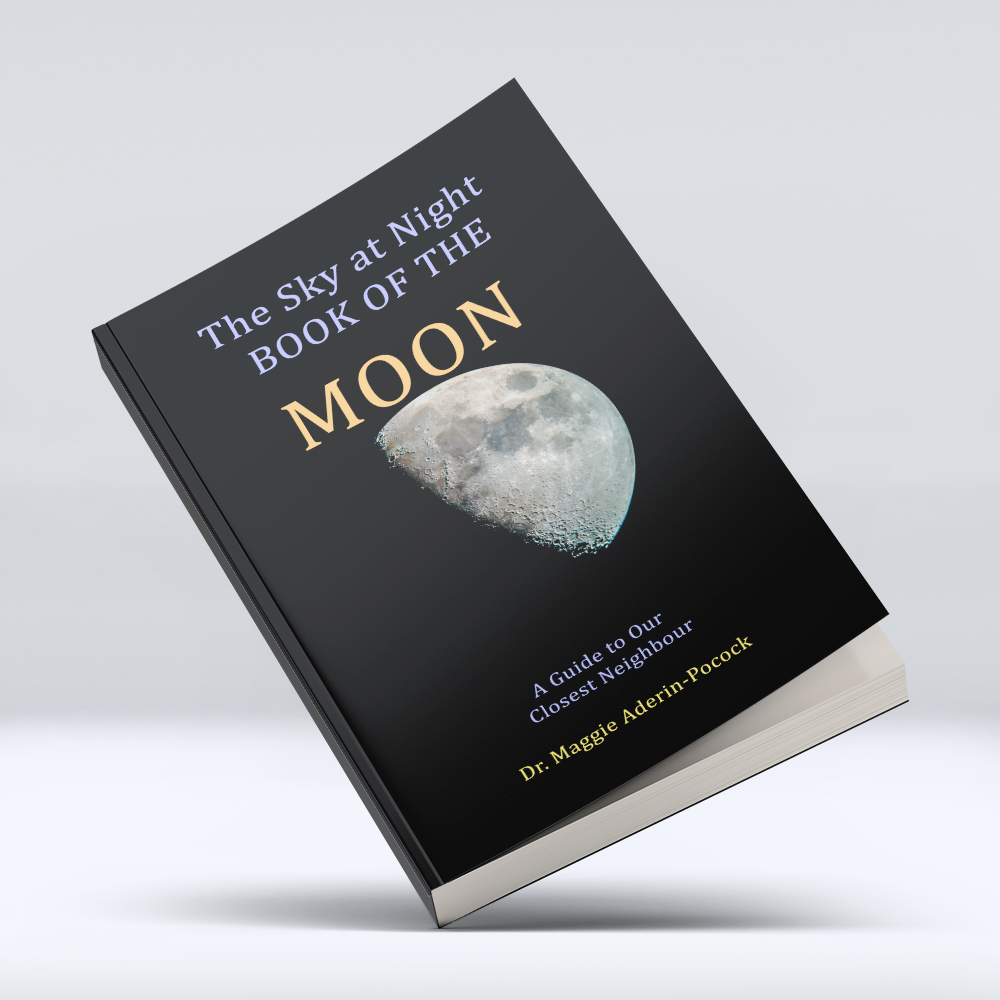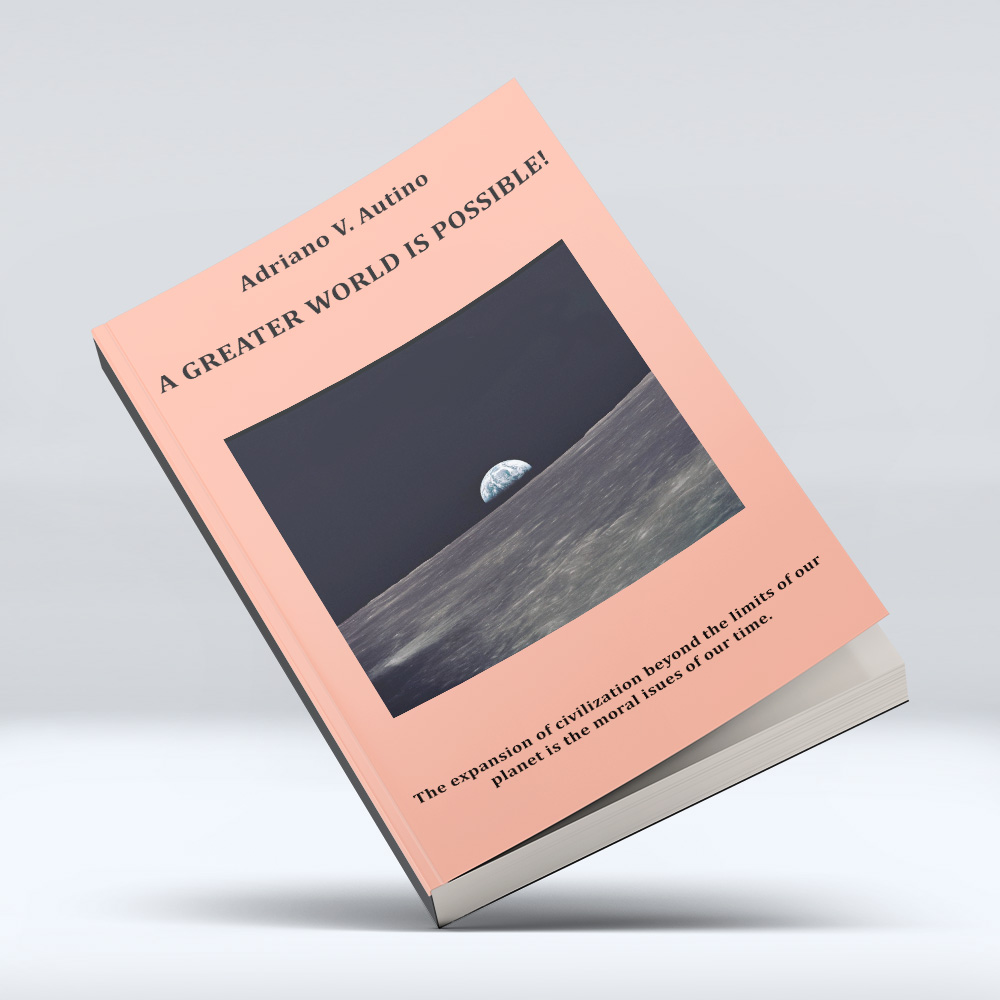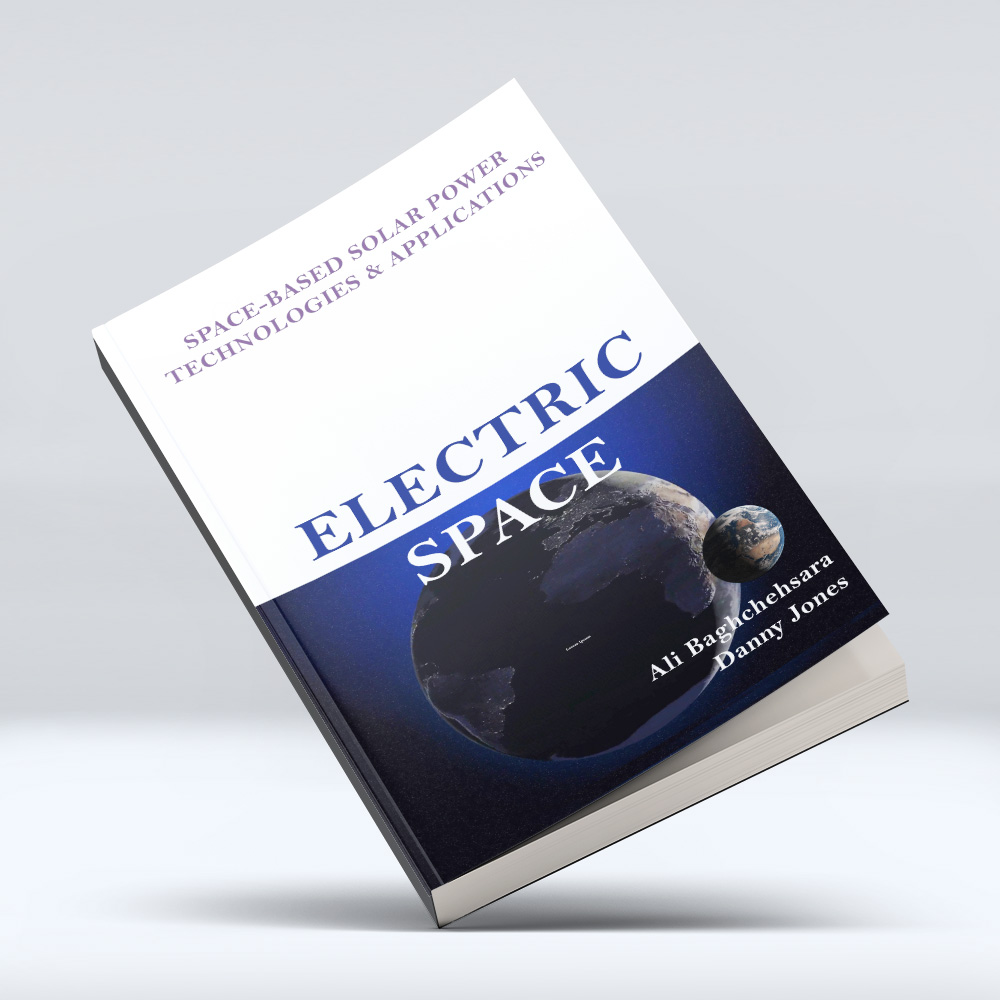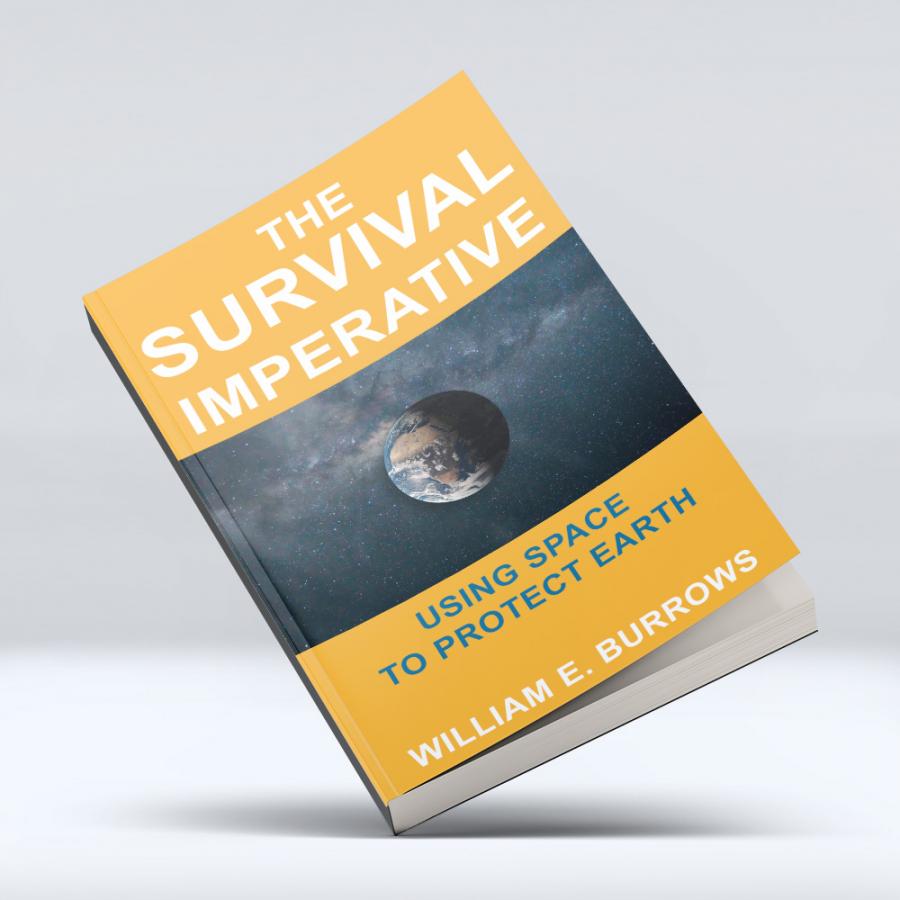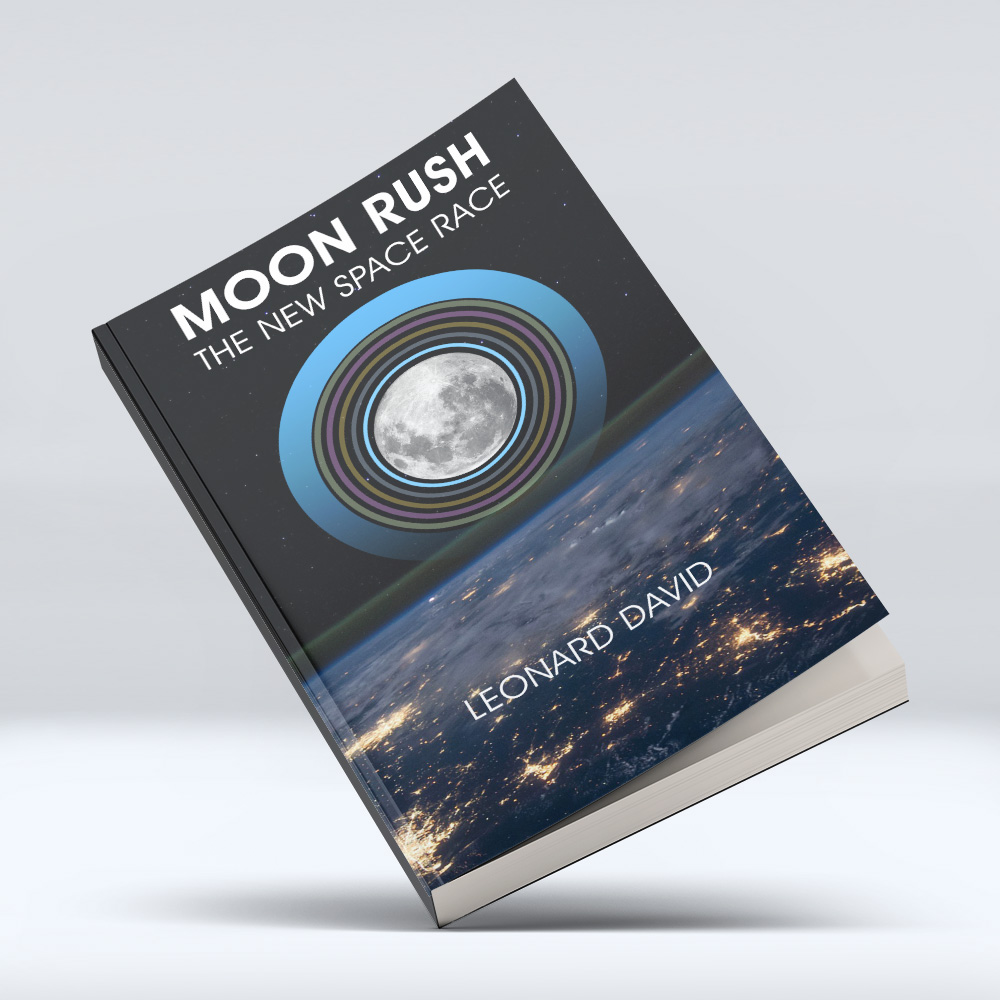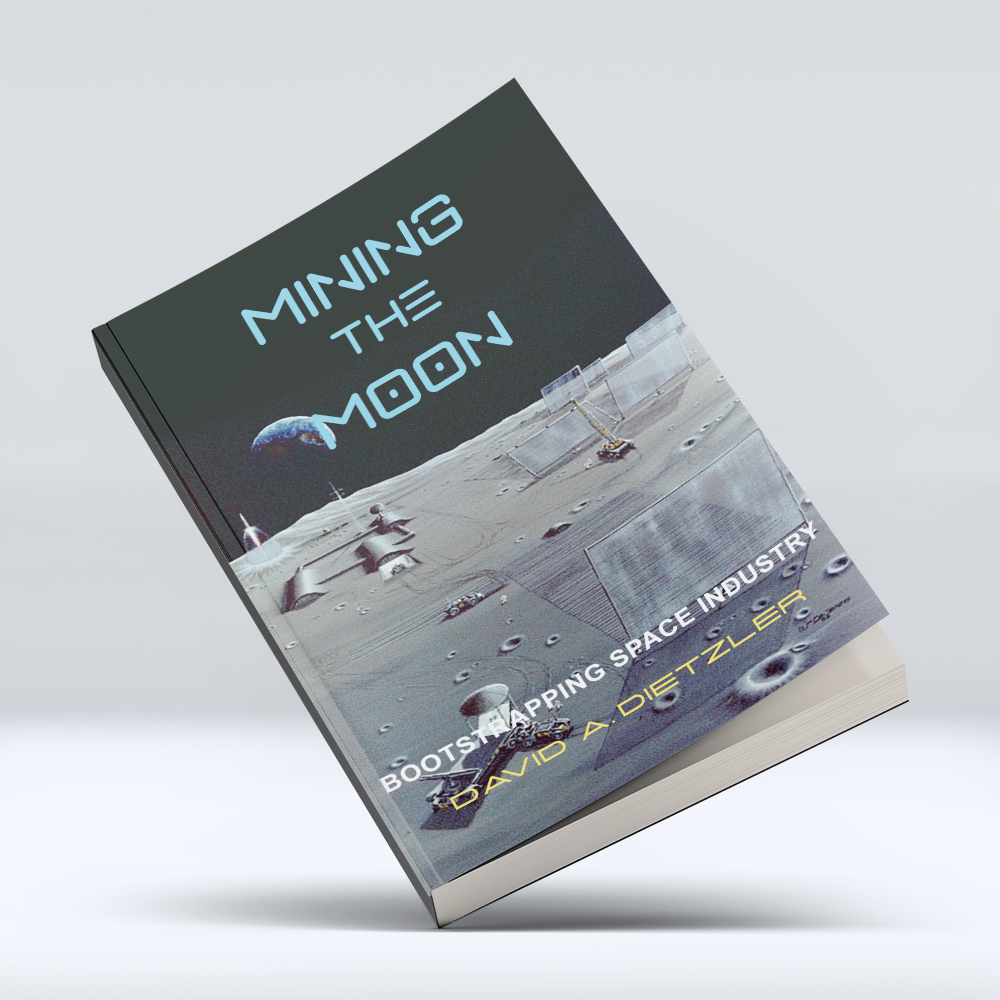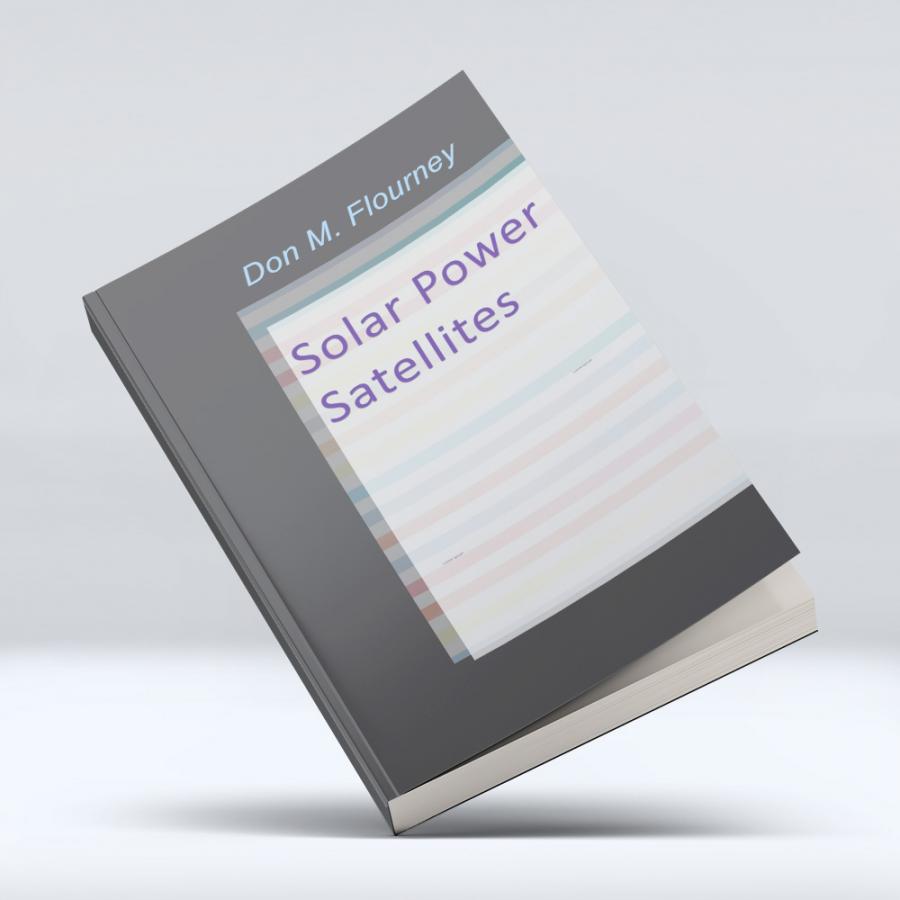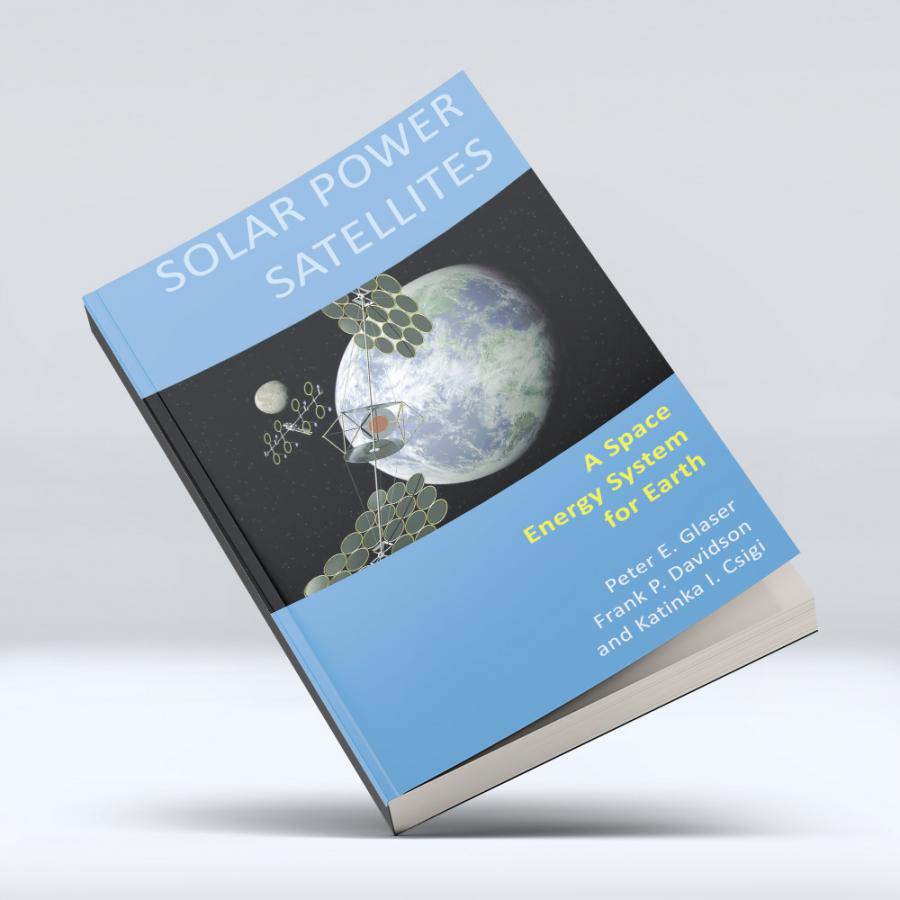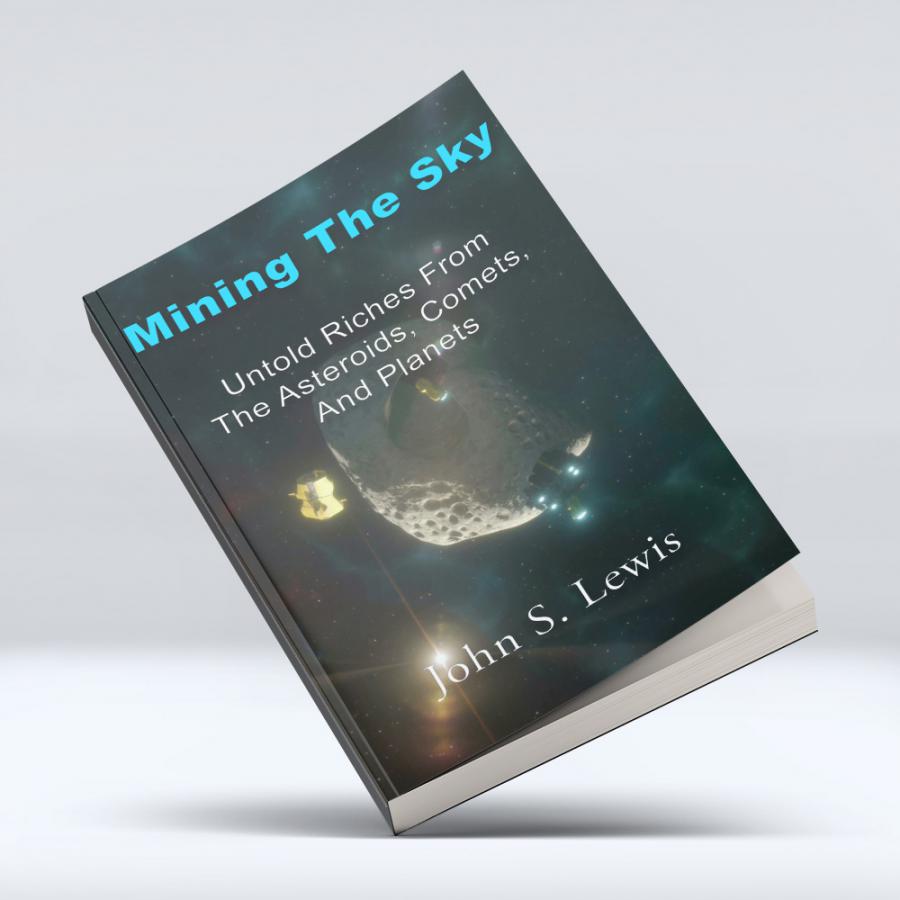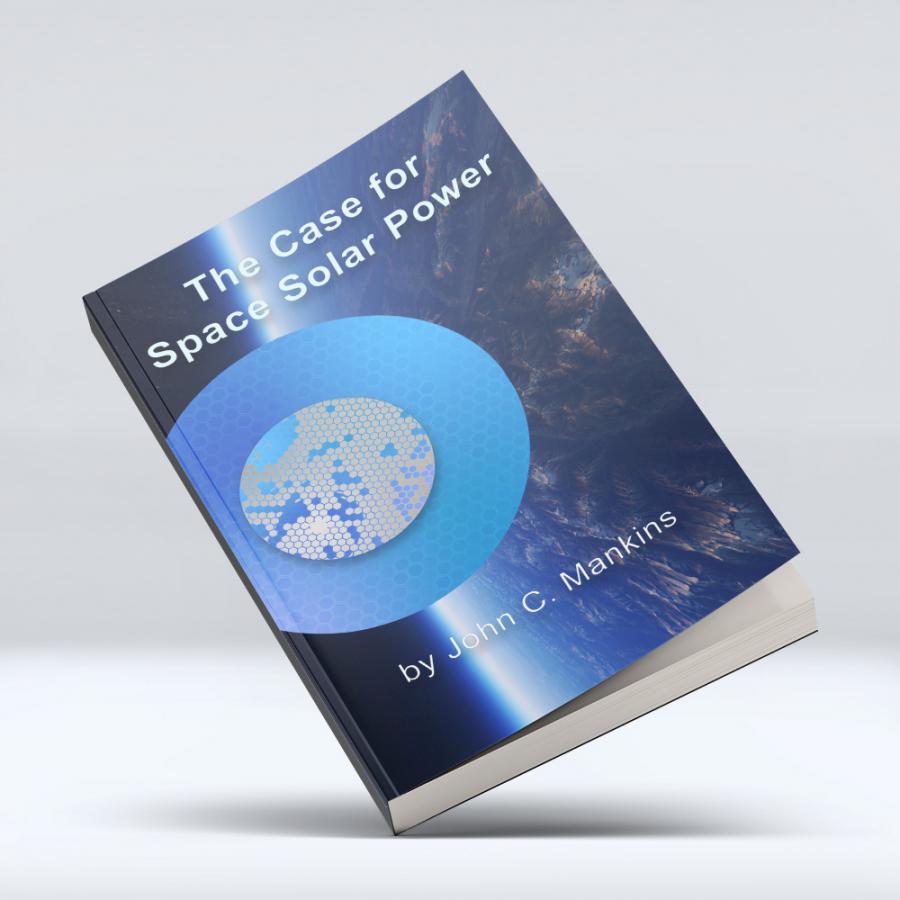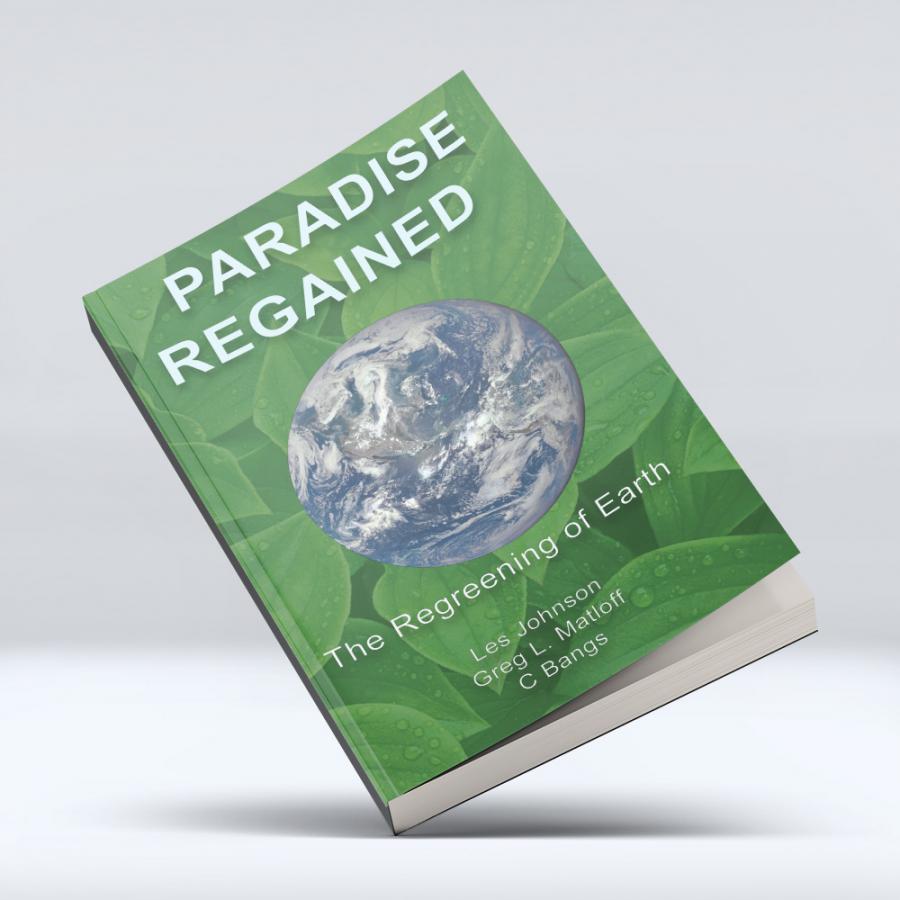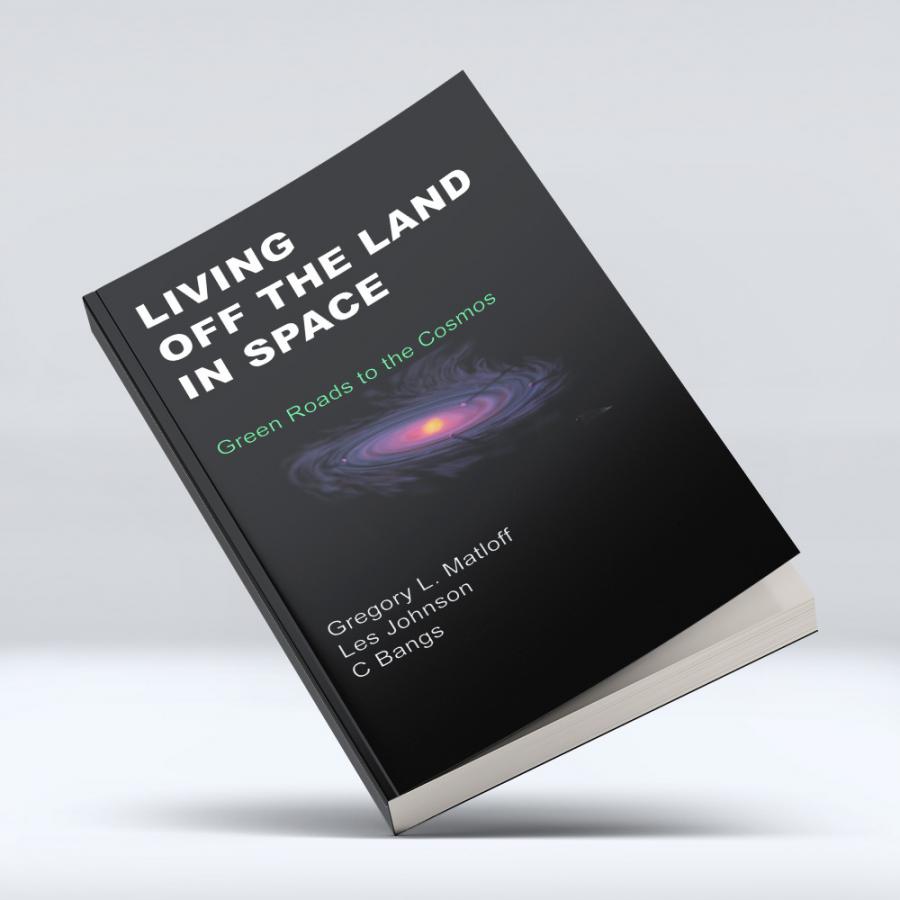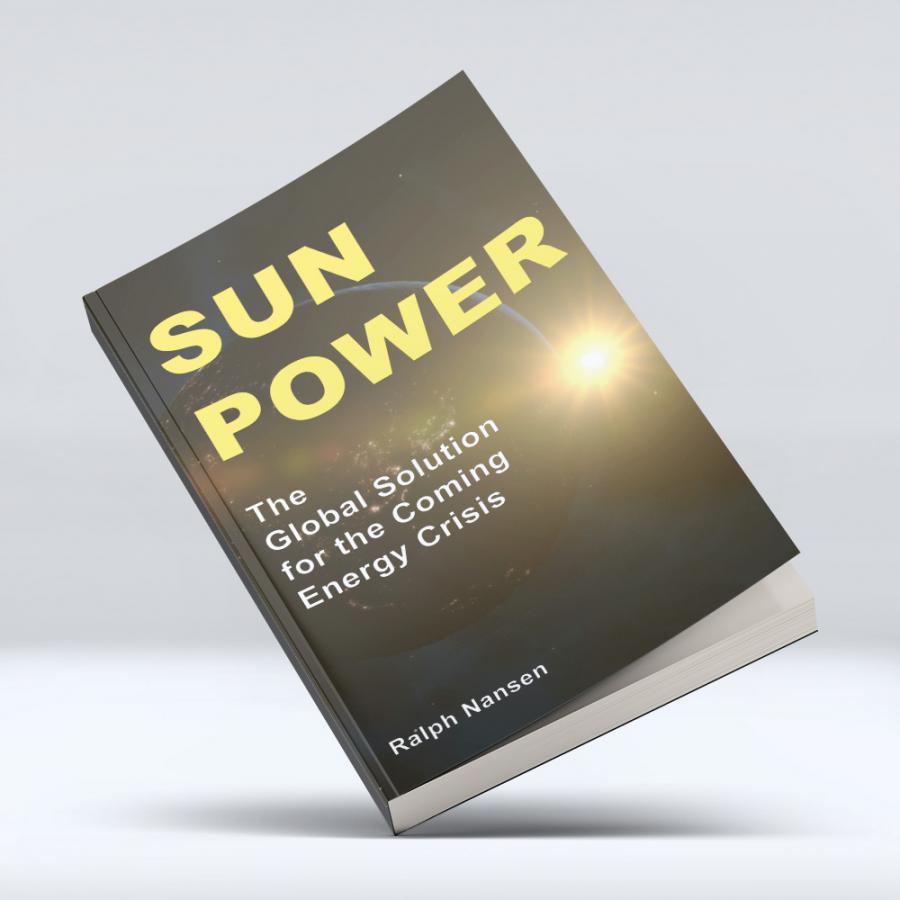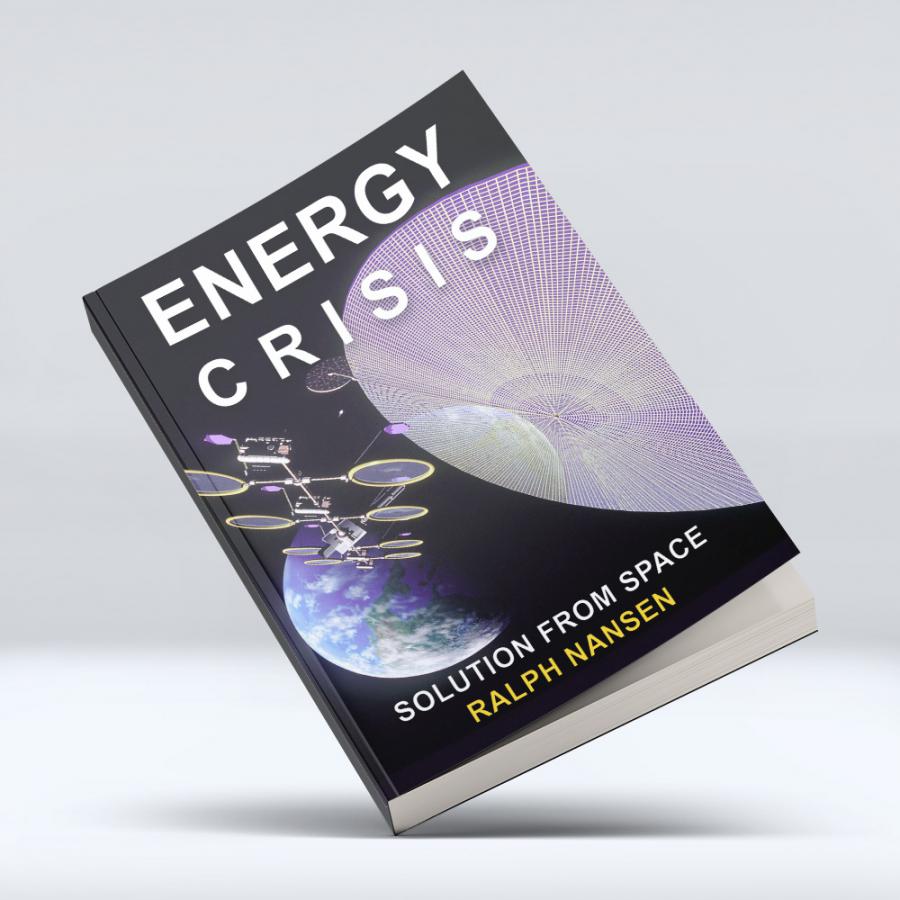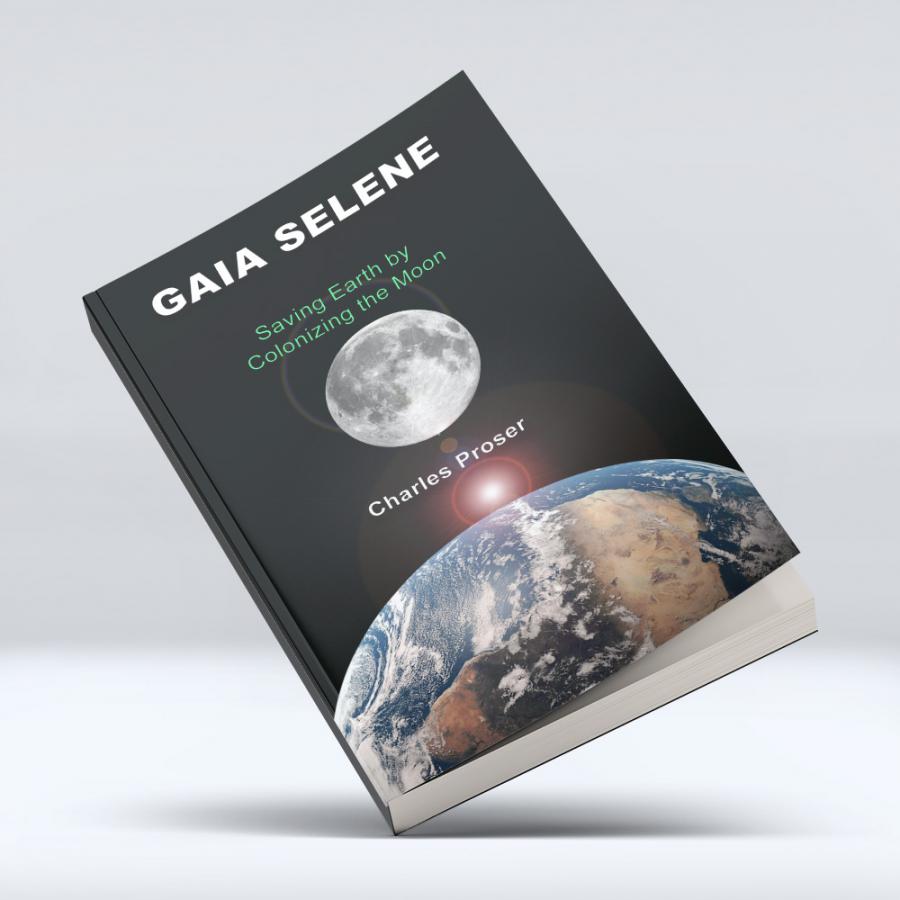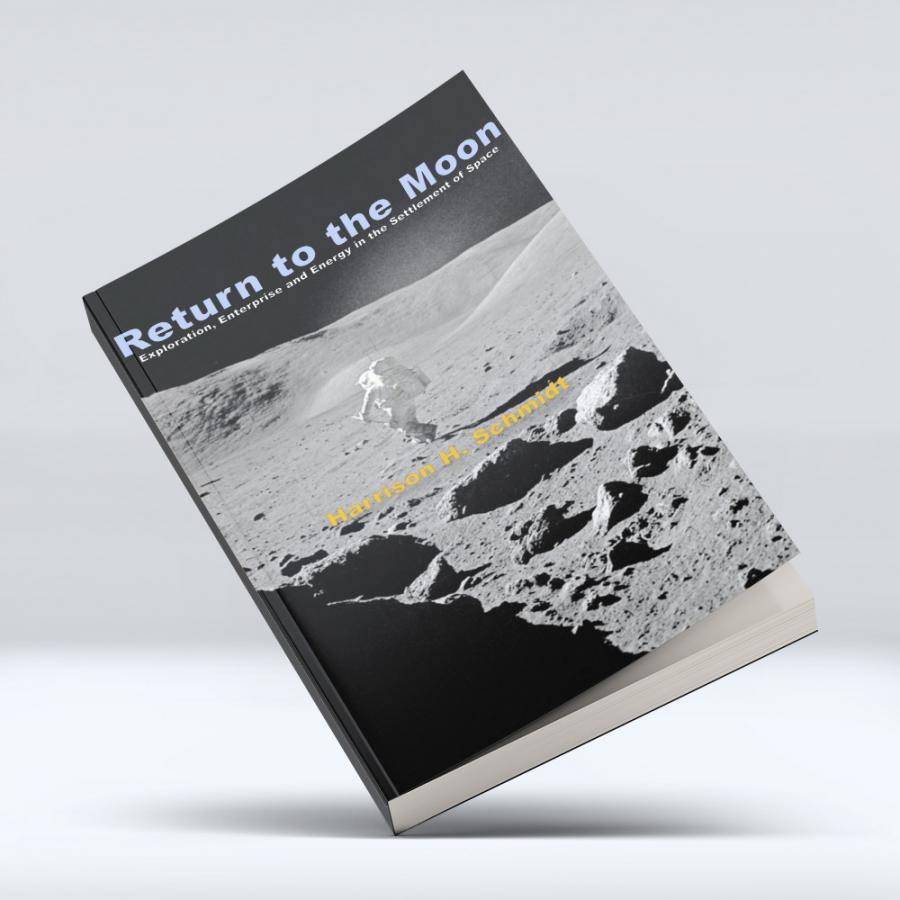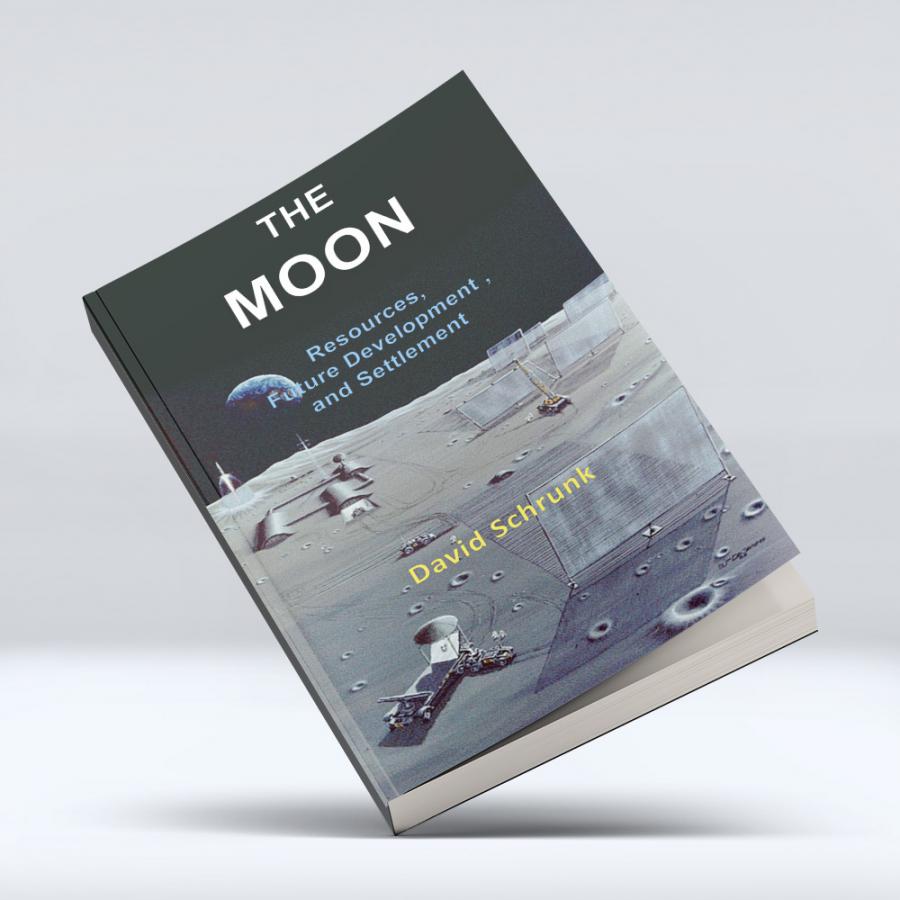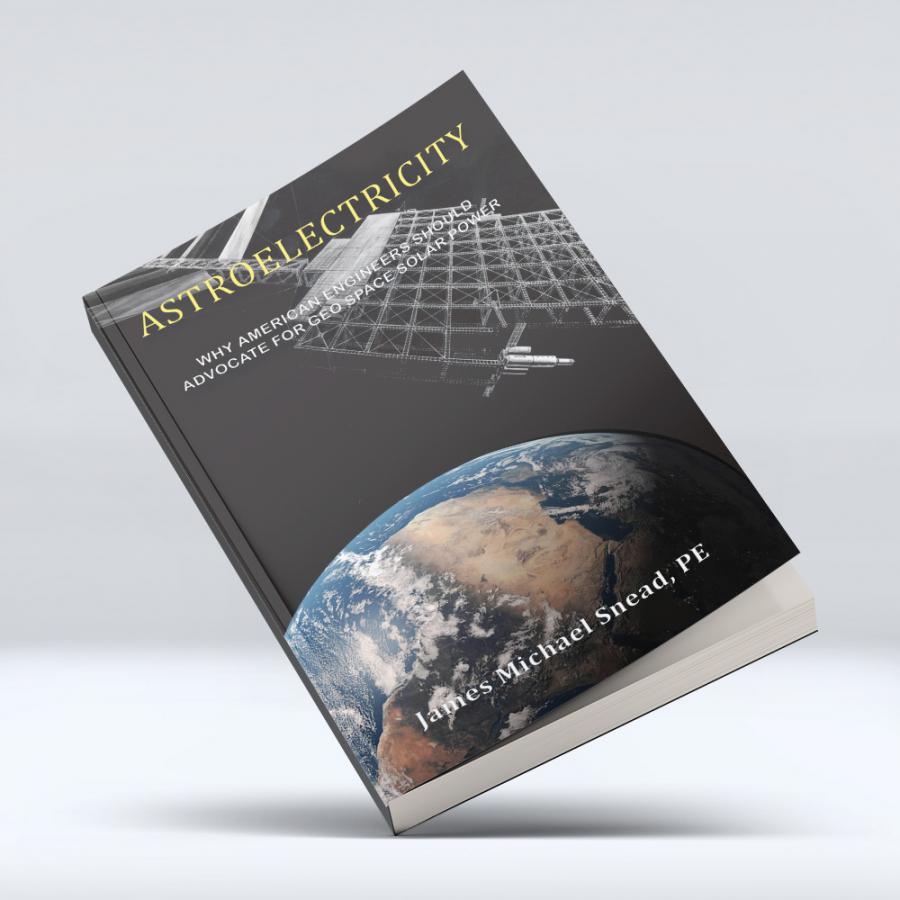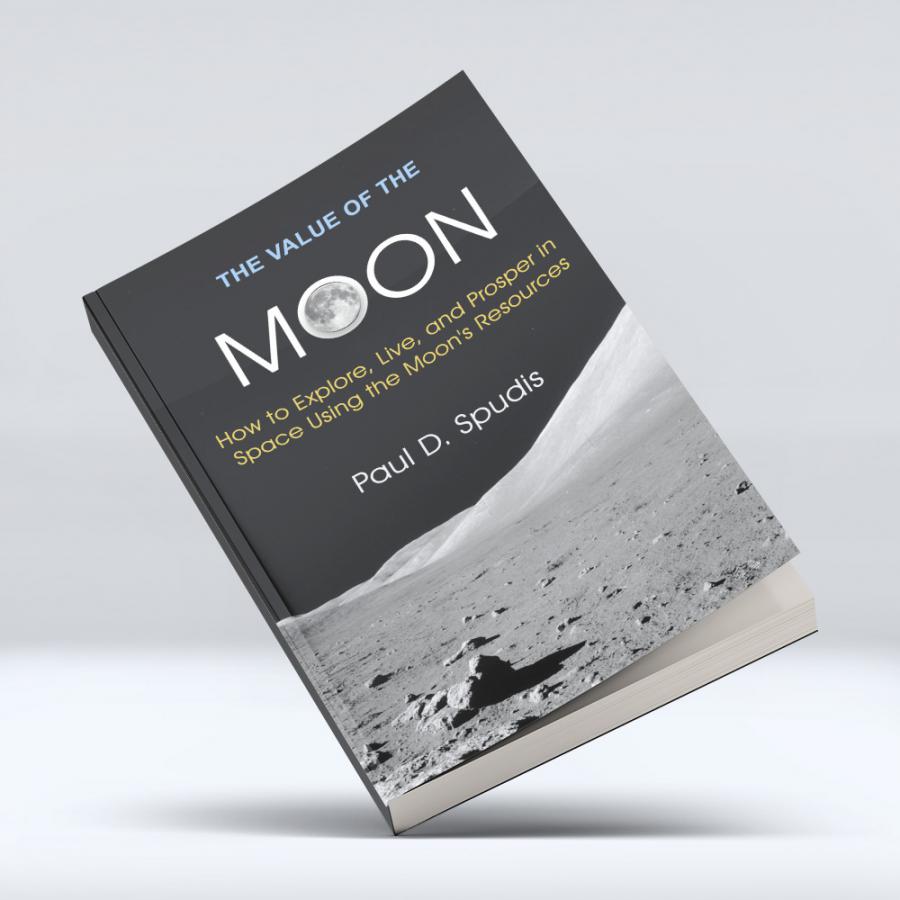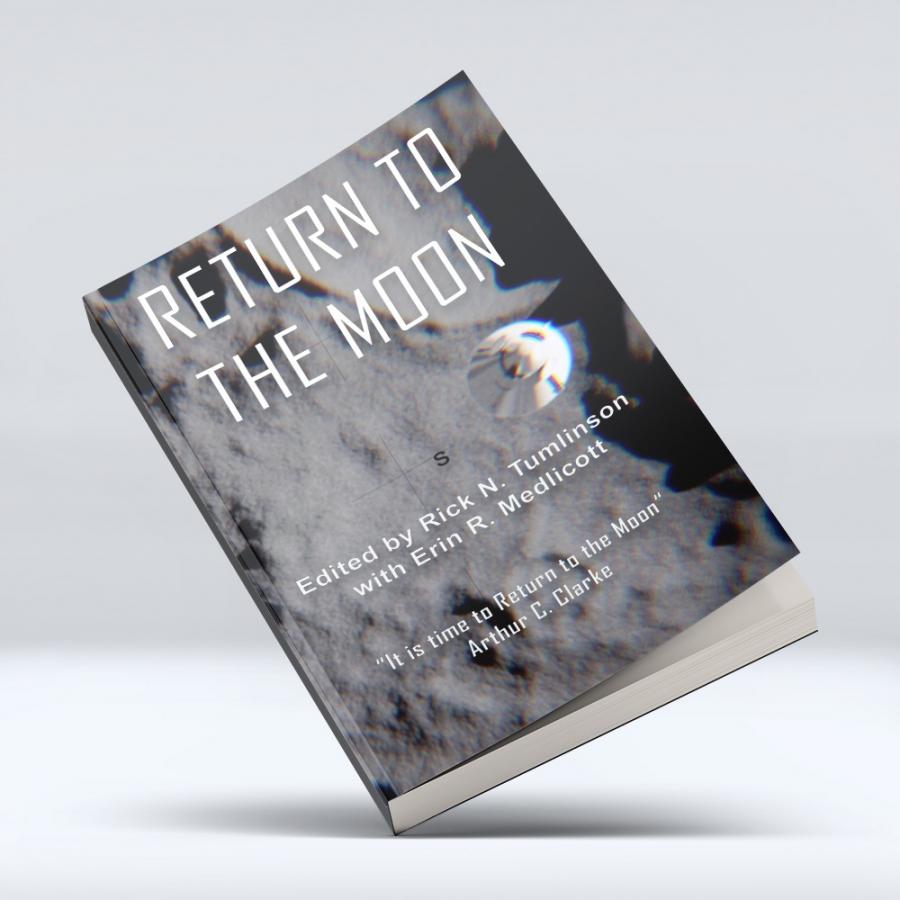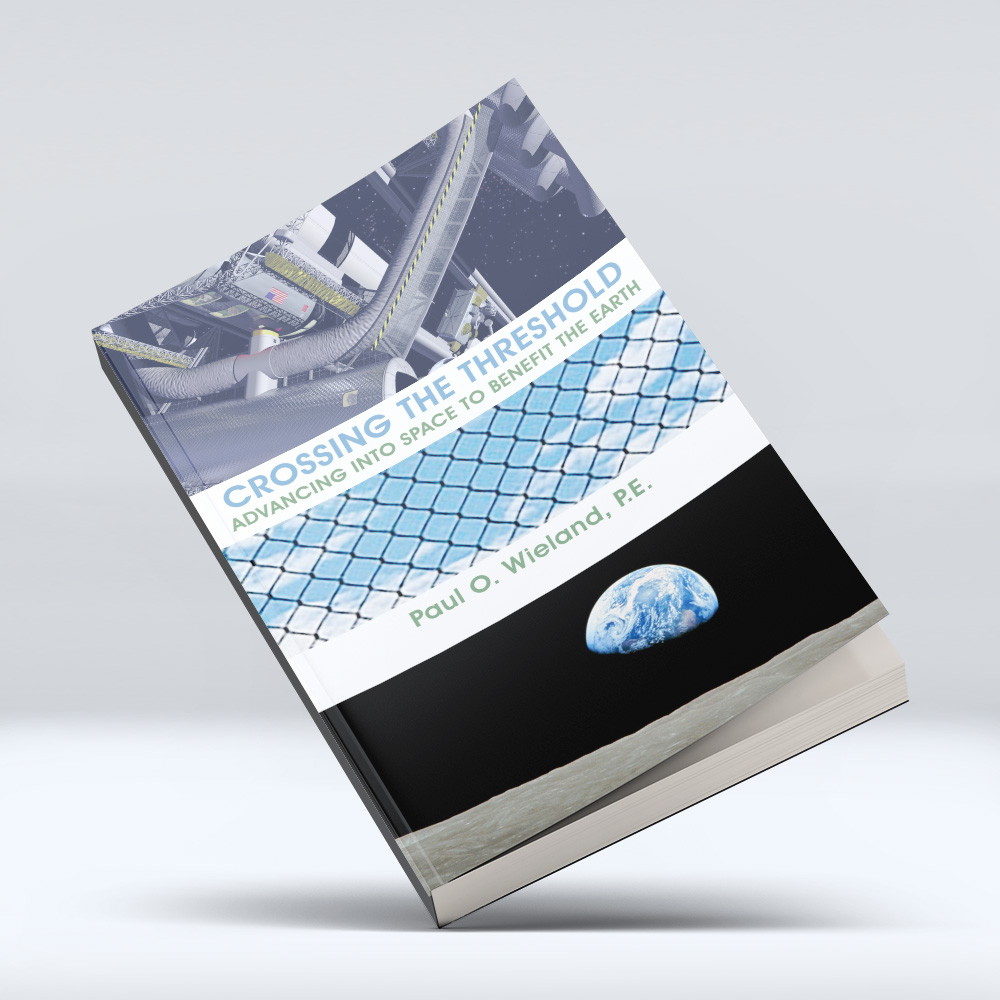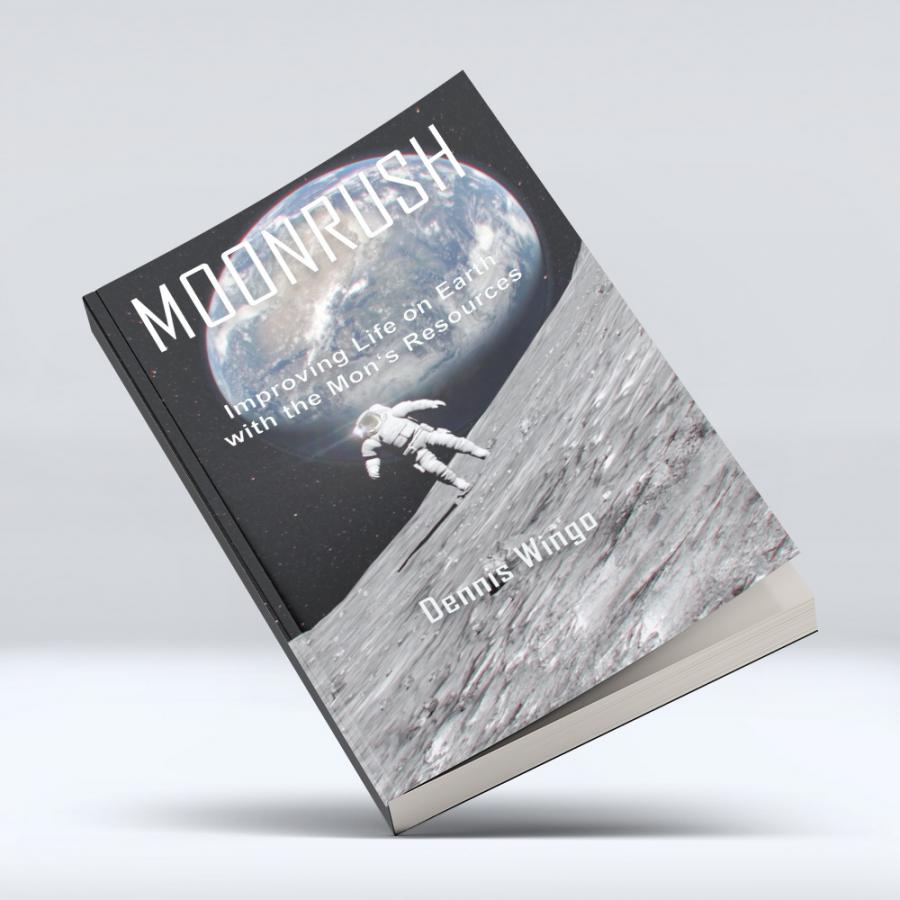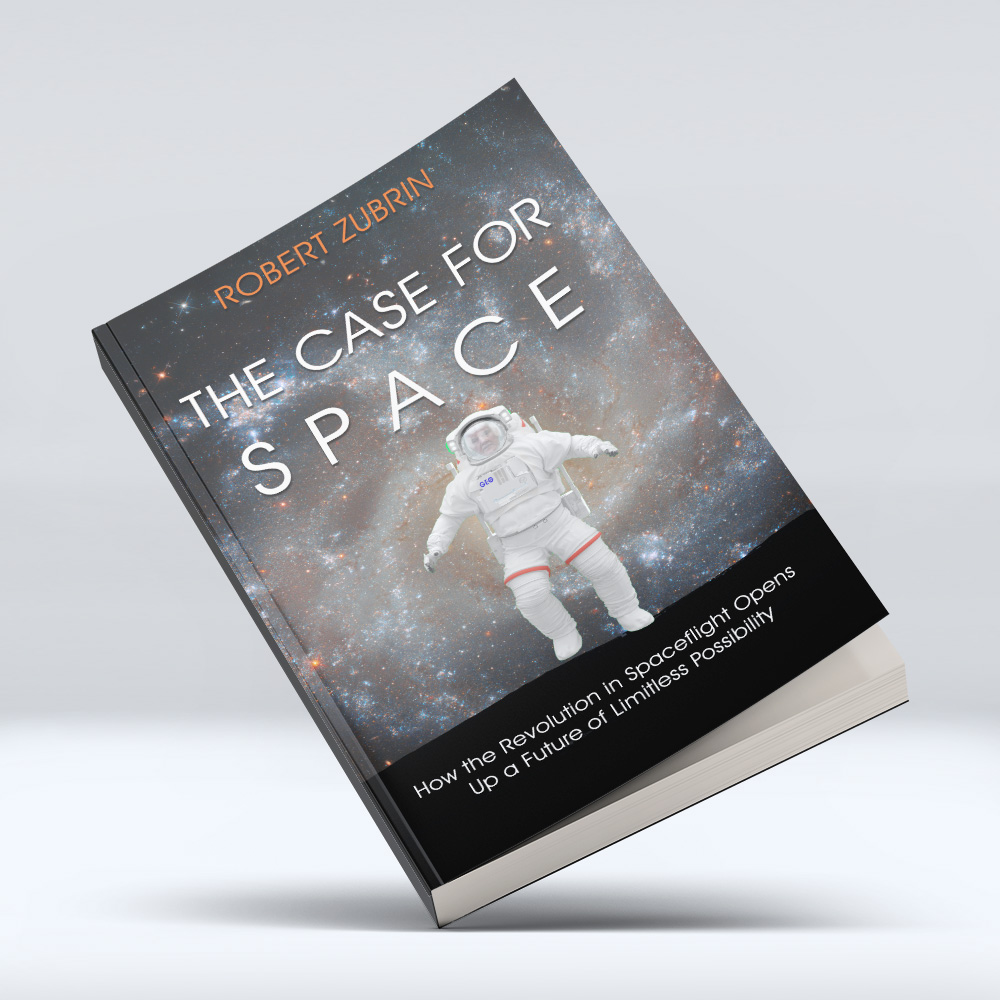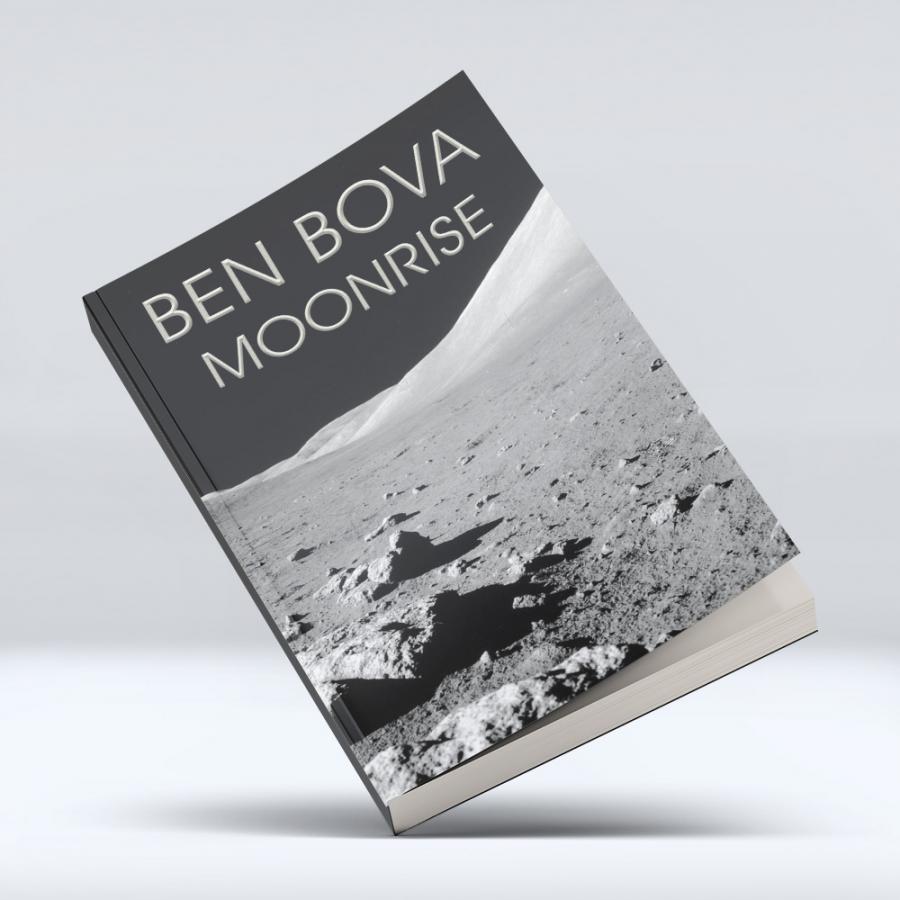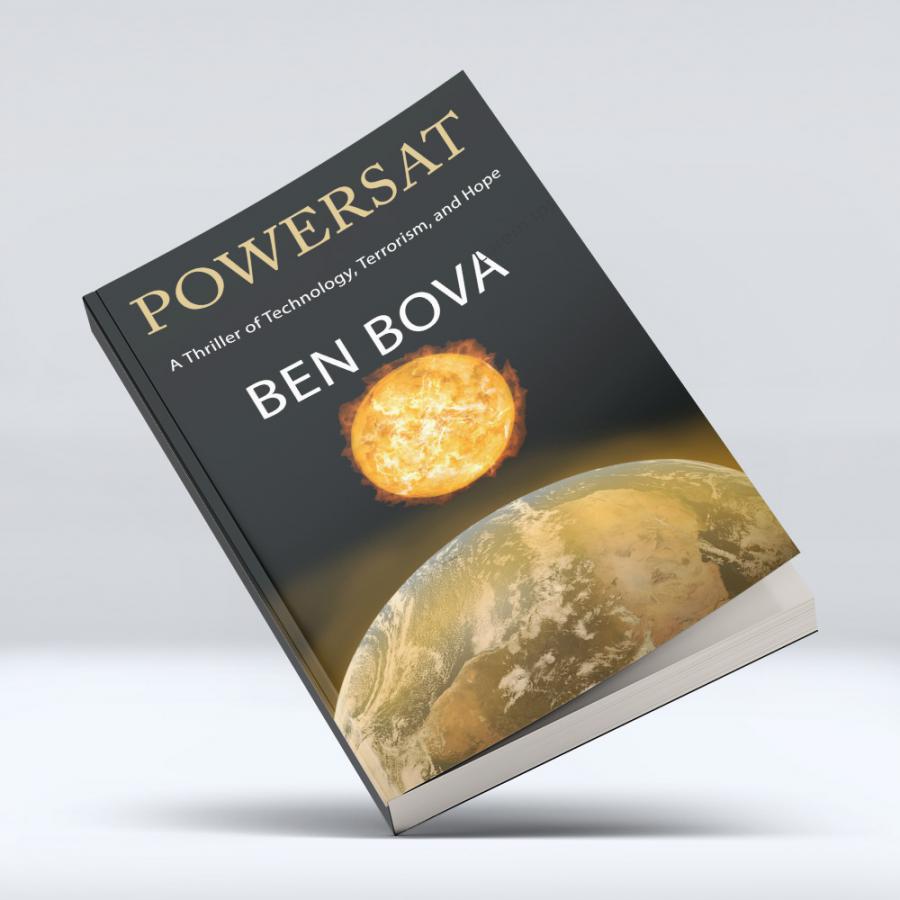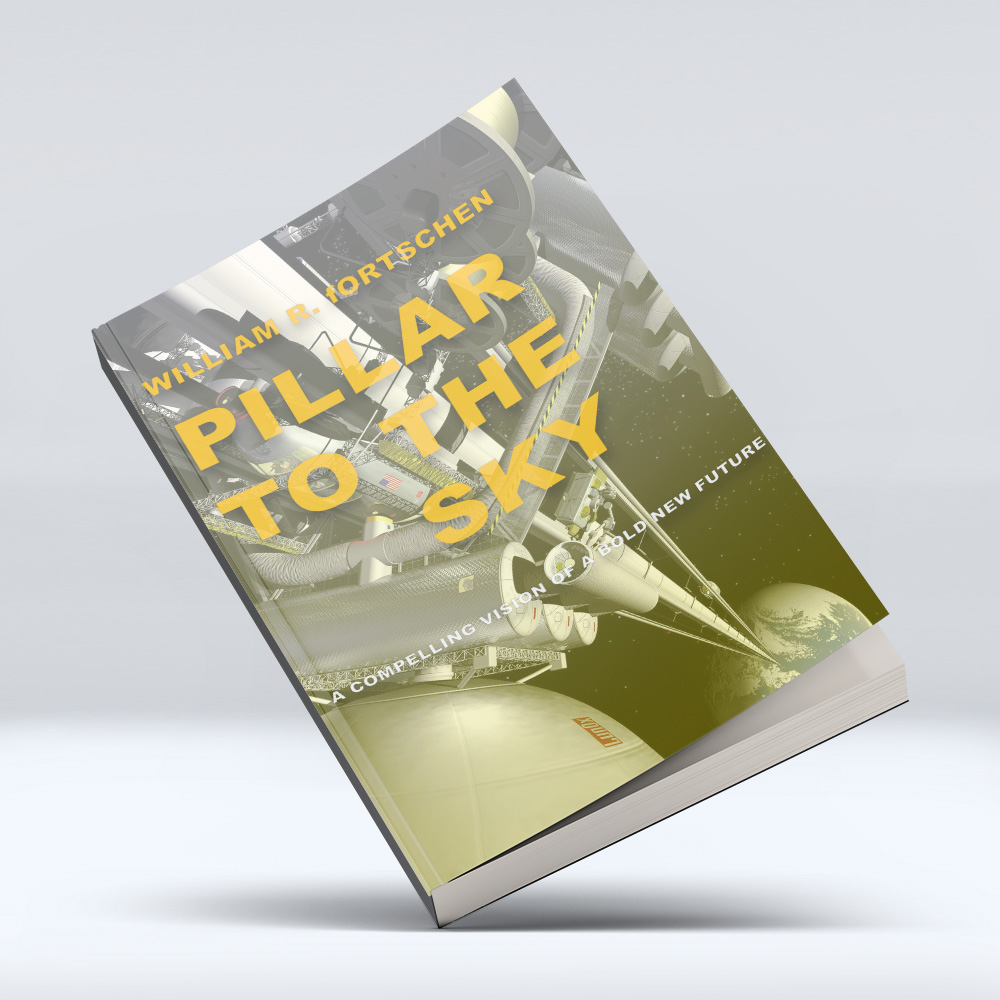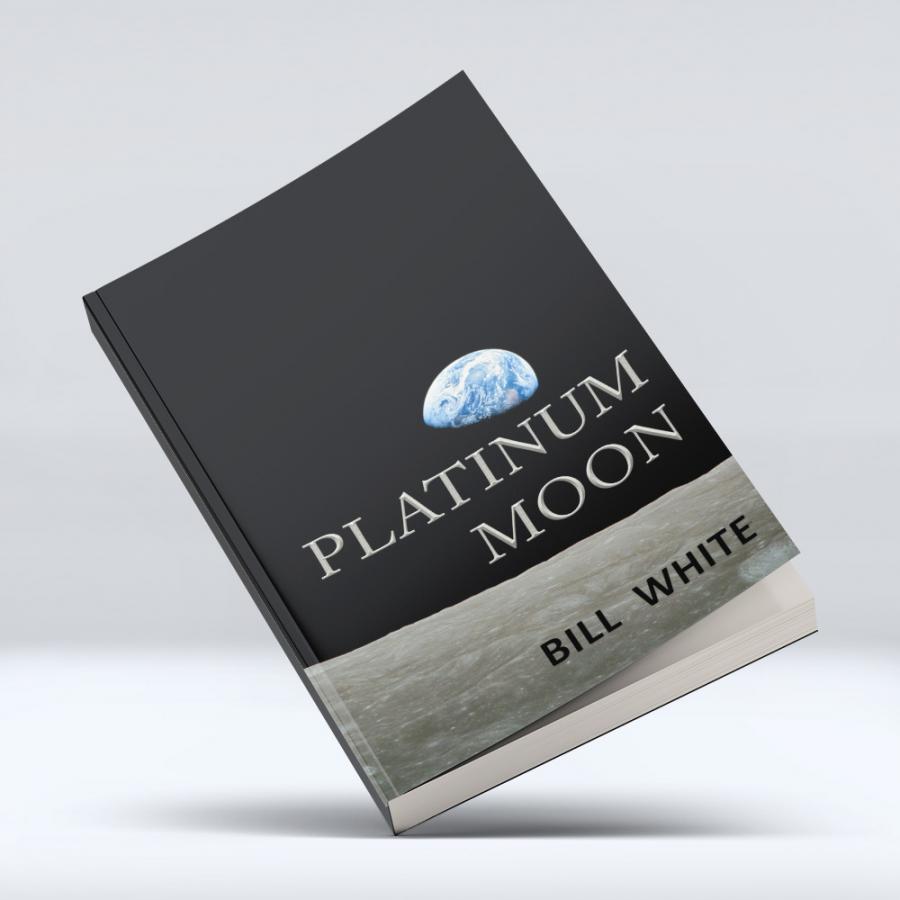Energy From Space Library
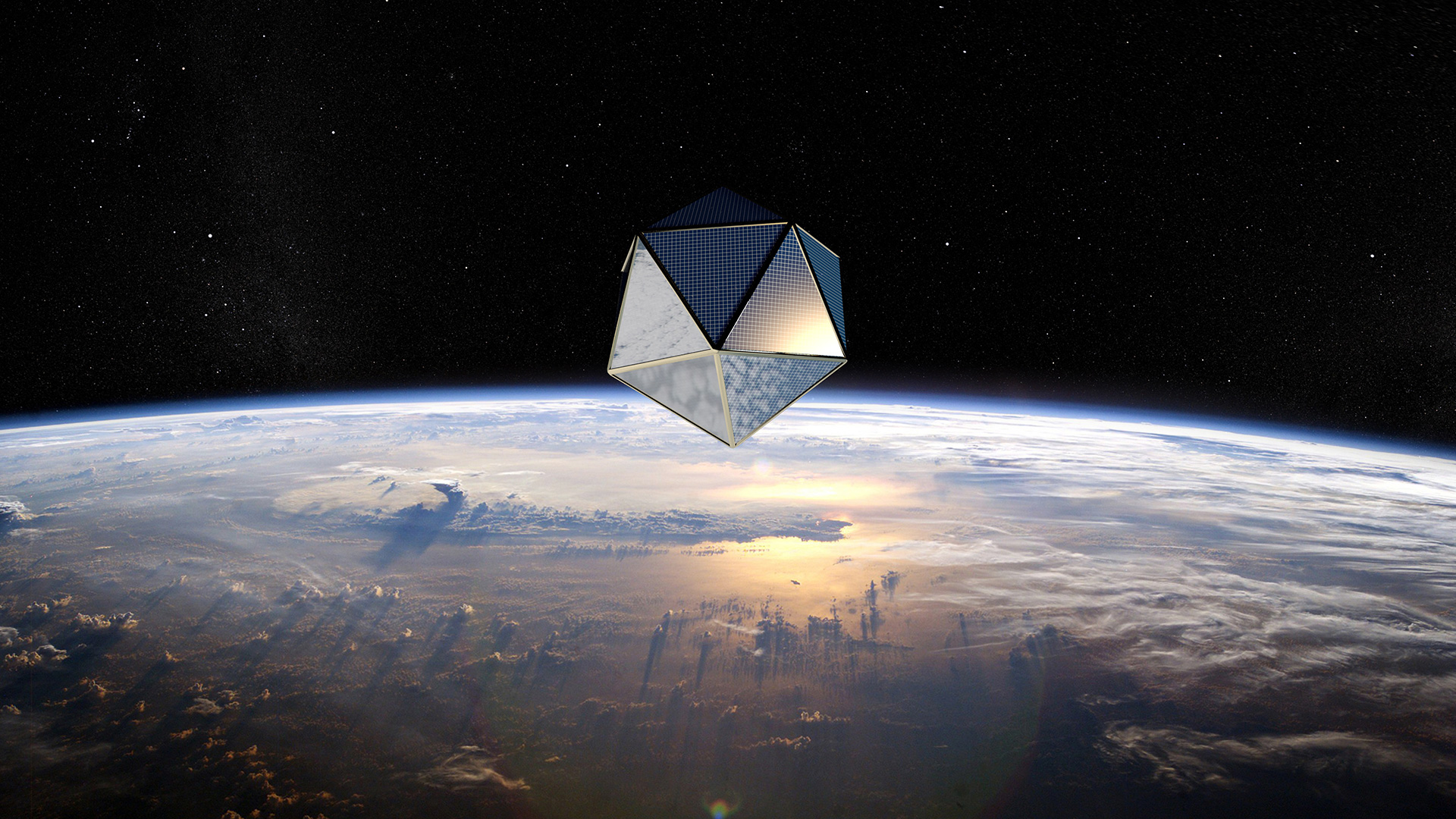
37 Books about the Space Energy Options
A (C)osmosis Art in-between Disciplines
Edited by Ioannis Michaloudis and Yuri Tanaka
Published by Cambridge Scholars Publishing August 13, 2021
The relationship of humankind to the cosmos has a very long history, and has raised many more questions than can be adequately answered. Why has the cosmos been a source of awe and wonder since the beginning of civilizations? How are the arts of today related to our engagement with the cosmos? Who are the contemporary practitioners working in this field? This volume is the first publication on this particular theme written for a general audience, and initiates a discourse on art inspired and driven by the fact that humans are enthusiastic observers of Earth and the universe surrounding it. Furthermore, by proposing the parenthetic idea of (C)osmosis Art, the book serves to introduce a new conceptual framework intrigued and inspired by the interactions between art, science and technology.
Introduction by Frank White
Contributors: Richard Clar, Maria Edwards, Dan Goods, Melany King, Ioannis Michaloudis, Sarah Jane Pell, Charles Ross, Yuri Tanaka, Frank White, Arthur Woods
The Sky at Night: Book of the Moon – A Guide to Our Closest Neighbour
Maggie Aderin-Pocock
Harry N. Abrams; Illustrated edition, April 9, 2019
Dr. Maggie Aderin-Pocock begins with the basics, unpacking everything from the moon’s topography and composition to its formation and orbit around the Earth. She travels back in time to track humanity’s relationship with the moon — beliefs held by ancient civilizations, the technology that allowed for the first moon landing, a brief history of moongazing, and how the moon has influenced culture throughout the years — and then to the future, analyzing the pros and cons of continued space travel and exploration. Throughout the book are sidebars, graphs, and charts to enhance the facts as well as black-and-white illustrations of the moon and stars.
Quotes:
"Interestingly, the word ‘moon’ seems to stem from an old English word derived from the Germanic word menon, which in turn is thought to come from an Indo-European word, menses, meaning ‘month’ or ‘moon’."
"What drove the transformation to flights for all? Essentially it was two things: demand by the public and a response from commerce, which saw an opportunity and drove the price down with technological developments to make it more accessible yet turn a good profit.
My hope is that space tourism will go the same way. As many of us desire to get out there, technology will be accelerated to meet the demand and cheap, safe flights to the Moon will become accessible. But for this to happen we need to develop an infrastructure on the lunar surface. This has been discussed for many years, but when will it actually happen?"
A Greater World is Possible: The expansion of civilization beyond the limits of our home planet is the moral issue of our time
Adriano Autino
Published by Amazon.com Services LLC, May 23, 2019
Humanity s facing three main challenges. 1) The so-called save-the-planet, pursued by the UN 2030 SDG agenda: fighting climate change, and using Space for Earth environment. 2) Space exploration, that will maybe take us to Mars. 3) The third one, to save civilization, is neglected, but eight billion terrestrials have no way to save civilization if they will not begin immediately to expand into space. Expansion into space is different from space exploration.
This book represents the author's reflection about the state of civilization, some possible futures and the deep moral implications of the great choices that civilization has to make. Very often such choices are driven by the more or less informal evolution of social and international relationships, rather than by a reasoned and motivated rationale.
Quotes:
"Civilization cannot stop growing, across all the vectors: culture, ethics, de-mocracy, freedom, economy, populations and numbers (demographics). All of these vectors are mutually related."
"Growth is therefore a process that started with the beginning of the cultural development of our civilization, a process closely intertwined with progress and civil growth, also intended as a moral growth. But it was only with the beginning of the mechanical industrial revolution, between the 18th and 19th centuries, that our species took the path of growth, the trampoline, which can literally take it to the stars."
"The real wealth is technological and scientific know-how and the potential for human work."
"Astronautical humanism defends every single human life."
Electric Space: Space-based Solar Power Technologies & Applications
Ali Baghchehsara and Danny Jones
Amazon; First edition, February 19, 2014
Innovation has delivered humanity from the caves to the ability to access the edge of space and to send robotic explorers deep into the solar system. It is the driving force in mankind’s expansion, growth and technological development. Beamed energy technology could potentially lower the cost of access to space and transportation though space, thereby lowering the cost of transporting goods and people to many destinations in the solar system and beyond.
Quotes:
"Access to energy in space is the key to developing its resources and those resources are required to support large scale space settlement."
"Once our civilization moves into space in a way that is sustainable our capabilities will grow in ways never imagined."
"The development of space will depend on the availability of energy and lots of it."
Building Habitats on the Moon: Engineering Approaches to Lunar Settlements
Haym Benaroya
Published by Springer Praxis Books, 1st ed. 2018 edition, January 11, 2018
Designing a habitat for the lunar surface? You will need to know more than structural engineering. There are the effects of meteoroids, radiation, and low gravity. Then there are the psychological and psychosocial aspects of living in close quarters, in a dangerous environment, far away from home. All these must be considered when the habitat is sized, materials specified, and structure designed.
This book provides an overview of various concepts for lunar habitats and structural designs and characterizes the lunar environment - the technical and the nontechnical. The designs take into consideration psychological comfort, structural strength against seismic and thermal activity, as well as internal pressurization and 1/6 g. Also discussed are micrometeoroid modeling, risk and redundancy as well as probability and reliability, with an introduction to analytical tools that can be useful in modeling uncertainties.
The book covers concepts and designs of structures and habitats on the Moon in detail … . Studying the book will give the reader a deep insight into all the technical, physiological and psychological problems and lets him establish the odds for the realization of a successful global 'Moon Village' vison. … The detailed references and registers, including all relevant interviews and quotations at the end of each chapter provide pointers to a whole universe of additional information.
ISBN-13: 978-3319682426
ISBN-10: 3319682423
The Survival Imperative: Using Space to Protect Earth
William E. Burrows
Published by Forge Books, 1st edition April 1, 2007
We are living through one of the most dangerous times in human history. Nuclear, chemical, and biological weapons technology are proliferating, and missile technology is falling into more and more hands. Extreme natural disasters like hurricanes, floods, fires, and earthquakes, are becoming increasingly costly – not only in dollars, but in lives – as population expands. Environmental crises threaten to provoke massive famines and widespread social collapse. Asteroids the size of battleships streak within striking distance of the earth every year.
Quotes:
"The most persistent rationale for living on the Moon has been—and remains, for lack of a better word—spiritual."
"Now the technological tools necessary to reach space and stay there are well understood and at hand. But there is no resolve because there is no apparent need to do so. Yet there is a need. And it is infinitely more important than political and economic competition between nations, and more practical than the amorphous need to explore that has carried science fiction since Lucian of Samosata sent a voyager to the Moon in AD 160."
"For the first time in human history, we have the potential to protect ourselves from a catastrophe of truly cosmic proportions."
Moon Rush: The New Space Race
Leonard David
Published by National Geographic, May 7, 2019
Veteran science journalist Leonard David explores the moon in all its facets, from ancient myth to future "Moon Village" plans.The 21st-century space race back to the moon has become more urgent, and more timely, than ever. This book sheds new light on our constant lunar companion, offering reasons to gaze up and see it in a different way than ever before.
Quotes:
"The one heavenly object easily seen by all on Earth, the Moon has intrigued humankind throughout history. Lunar deities appear in just about every mythological tradition."
"The Moon of tomorrow is being shaped today by visionary scientists, engineers, designers, and entrepreneurs from around the world. But just as Earth and its sole natural satellite are gravitationally locked in a tense and dynamic relationship, businesses and nations today play tug-of-war relentlessly on matters of politics, economics, and law—interactions clearly influencing the plans and aspirations for exploring and exploiting the Moon and its resources."
"Imagine a future when the Moon tosses off an extra-added glow in the nighttime sky: the visible lights from a lively, sprawling lunar city as humanity acquires long-lasting footing on our nearby world."
"The Moon is steeped in surprises of late, especially this discovery of water within and on its surface and sequestered at the poles."
Mining the Moon: Bootstrapping Space Industry 3rd Edition
David Dietzler
Amazon Kindle, October 12, 2020
This book discusses the industrialization and settlement of the Moon, our stepping stone to free space, Mars, the solar system and ultimately the stars. It looks at the technical challenges of mining the Moon for all sorts of materials to build solar power satellites, spaceships and space settlements in orbit. Engineering students and professionals alike will enjoy this book and so will technically minded people of all sorts.
Solar Power Satellites
Don M. Flournoy
Published by Springer, December 2, 2011
'Solar Power Satellites' shows why and how the space satellite industry will soon begin expanding its market from relaying signals to Earth to generating energy in space and delivering it to the ground as electricity. In all industrialized nations, energy demand is growing exponentially. In the developing world, the need for energy is as basic as food and water.
Quote:
"The world is facing a perfect storm in which an energy crisis and an environmental crisis are occurring simultaneously."
Krafft Ehricke's Extraterrestrial Imperative
Marsha Freeman
Published by Apogee Books February 1, 2009
A summation of Krafft Ehricke’s work on encouraging the exploration of space, this account offers biographic information on the man himself; encompasses details of his new, innovative ideas; and portrays his thoughts on the importance and value of space travel for society. Providing an understanding of the early history of the space pioneers, what they helped accomplish, and how Ehricke's vision came to fruition, this reference details the continuing need for a creation of a long-term vision for the exploration of space. Historic and yet topical, this resource also includes many of Ehricke’s original works, many of which were previously out of print.
Solar Power Satellites: A Space Energy System for Earth
Peter E. Glaser, Frank P. Davidson, Katinka I. Csigi
Published by Wiley,2 edition December 11, 1997
Space Solar Power creates awareness of the potential global benefits of power from space. It discusses space power options based on wireless power transmission (WPT) to meet global energy demands and to reduce reliance on fossil and nuclear fuels. It also discusses the current and emerging international regulatory and legal regimes to enable the realization of the solar power satellite concept Earth orbits, and on the Moon.
Mining The Sky: Untold Riches From The Asteroids, Comets, And Planets
John S. Lewis
Publication by Helix Books Basic, September 23, 1997
While we worry over the depletion of the earth’s natural resources, the pollution of our planet, and the challenges presented by the earth’s growing population, billions of dollars worth of metals, fuels, and life-sustaining substances await us in nearby space. In this visionary book, noted planetary scientist John S. Lewis explains how we can mine these precious metals from the asteroids, comets, and planets in our own solar system for use in space construction projects. And this is just one of the possibilities. Join John S. Lewis as he contemplates milking the moons of Mars for water and hollowing out asteroids for space-bound homesteaders—all while demonstrating the economic and technical feasibility of plans that were once considered pure fiction.
The Case for Space Solar Power
John Mankins
Published by Virginia Edition Publishing, January 5, 2014
This book makes the Case for Space Solar Power; recounting the history of this fascinating concept and summarizing the many different ways in which it might be accomplished. It describes in detail a highly promising concept – SPS-ALPHA (Solar Power Satellite by means of Arbitrarily Large Phased Array) – and presents a business case comprising applications in space and markets on Earth. The book explains how it is possible to begin now with technologies that are already at hand, while developing the more advanced technologies that will be needed to deliver power economically to markets on Earth. The Case for Space Solar Power concludes by laying out a path forward that is both doable and affordable: within a dozen years or less, the first multi-megawatt pilot plant could be in operation. Getting started could cost less than $10 million over the first 2 years, less than $100 million over the next half dozen years.
Given that Space Solar Power would transform our future in space, and might provide a new source of virtually limitless and sustainable energy to markets across the world, the book poses the question: why wouldn't we pursue Space Solar Power?
Paradise Regained: The Regreening of Earth
Greg Matloff, C. Bangs, Les Johnson
Published by Copernicus, January 19, 2010
What was our planet like before the advent of our modern civilization? What effects has our civilization had on the planet and its ecological systems? Paradise Regained discusses these questions and then creates a scenario for the re-greening of Earth. The authors introduce new and innovative ideas on how humankind might use the resources of the solar system for terrestrial benefit. Earth would then become a place for a technologically advanced human civilization to live in synchronization, if not in harmony, with the environment which gave us birth.
Living Off the Land in Space: Green Roads to the Cosmos
Greg Matloff, C. Bangs, Les Johnson
Published by Copernicus, August 24, 2007
This book presents a visionary concept for future development of space travel. It describes the enabling technology for future propulsion concepts and demonstrates how mankind will ‘live off the land in space’ in migration from Earth. For the next few millennia at least (barring breakthroughs), the human frontier will include the solar system and the nearest stars. Will it be better to settle the Moon, Mars, or a nearby asteroid and what environments can we expect to find in the vicinity of nearby stars? These are questions that need to be answered if mankind is to migrate into space.
Sun Power: The Global Solution for the Coming Energy Crisis
Ralph Nansen
Published by Nansen Partners, January 8, 2012
The world is fast approaching a crisis of global proportions when our comfortable lives will be plunged into darkness as the last drop of oil is sucked from the ground. Our planet is choking on the deadly by-products of our energy hunger—foul air, radiation poisoning, oil-slicked waters, and acid rain. Sun Power offers a vision of hope and a plan to begin the long journey to energy independence and global healing within the next ten years. Aerospace visionary Ralph Nansen reveals a grand but elegant solution to the problems plaguing our energy-hungry world—a plan for capturing the vast power of our sun in space,
Energy Crisis: Solution from Space
Ralph Nansen
Published by Apogee Books Space Series, – October 1, 2009
This book bya erospace visionary Ralph Nansen presents a bold solution for global climate change and dependence on oil and the threat of war over its diminishing supply. This visionary reference explores how developing solar energy could bring about unprecedented economic prosperity and opportunity on a global scale. By using existing technology in revolutionary ways, this new energy plan would have the potential to create jobs and revitalize the economy while offering a clean, affordable, and long-term solution. Asserting that the current generation can develop this innovative energy source to change the world economically, environmentally, and politically for the better, this stunning guide offers an unexpected new hope for the future.
The High Frontier
Gerard K. O'Neill
Published by Space Studies Institute, Inc, January 5, 2014
Original Publication Date: 1976
In 1974, Dr. O’Neill put his three-pronged plan of Space Colonization, Space Solar Power and Large Scale Space Construction into easily accessible form with the release of the book The High Frontier. Fourteen years later, The Space Studies Institute, founded by O’Neill, re-released the original text, unchanged except for the doctor’s addition of the Appendix “A View from 1988.”
This book is one of the milestone and timeless classics of Space Habitation, Alternative Power and Human Potential, all made possible with technology we already have.
Gaia Selene - Saving Earth by Colonizing the Moon
Charles Proser
DVD produced by Charles Proser April 22, 2005
Publication Date: November 7, 2012 [Kindle Edition]
Gaia Selene is a collection of interviews with experts in fields as varied as the energy crisis, global warming, nuclear fusion technology, space militarization, lunar solar power, Near Earth Asteroids, space elevators, space tourism, and more. These seemingly disparate fields are woven together into a compelling theme through narration provided by the author. The common thread is that humanity is in trouble - we are depleting our resources at an unsustainable rate, in the process destroying the very biosphere we ourselves require for life - and that the only way we can sustain our species in the years ahead is by looking upward toward the Moon.
Note: The Kindle version is a graphic version of the DVD.
Return to the Moon: Exploration, Enterprise, and Energy in the Human Settlement of Space
Harrison H. Schmitt
Published by Praxis Publishing Ltd., 2006
Former NASA Astronaut Harrison Schmitt advocates a private, investor-based approach to returning humans to the Moon—to extract Helium 3 for energy production, to use the Moon as a platform for science and manufacturing, and to establish permanent human colonies there in a kind of stepping stone community on the way to deeper space. With governments playing a supporting role—just as they have in the development of modern commercial aeronautics and agricultural production—Schmitt believes that a fundamentally private enterprise is the only type of organization capable of sustaining such an effort and, eventually, even making it pay off.
About the Author
Harrison Schmitt is, as of this date, the 12th and last human to have stepped on the Moon. As an astronaut, pilot, geologist, academic, businessman, and United States Senator, he has had a distinguished career in science and technology practice and policy. Schmitt was the first scientist to go into space specifically to explore the Moon as the Lunar Module Pilot and field geologist on the last Lunar Mission, Apollo 17.
Space Systems Architecture for Resource Utilization: A Workbook for Practitioners
Peter J. Schubert
Publication by Cambridge Scholars Publishing, 26th April 2021
Space resources will transform human enterprise. This practical workbook is a comprehensive treatment, packed with unique exercises, and offers an invaluable guide for start-ups, students, and space enthusiasts, who will find insights to strengthen and deepen their own capabilities. Systems are complex and architectures tie them together, requiring technical understanding, and so much more. This book will show the reader how to start a space business, appeal to legislators, interact with regulators, engage the public, and to coordinate diverse, international teams. It will allow them to gain the confidence to build, live, work, and move about in space.
ISBN: 1-5275-6765-6
ISBN13: 978-1-5275-6765-8
Pages: 301 Hardback
The Moon: Resources, Future Development, and Settlement
David Schrunk (Author) Burton L. Sharpe (Contributor), Bonnie L. Cooper (Contributor), Madhu Thangavelu (Contributor)
Published by Springer Praxis; 2nd edition, 2007
In The Moon: Resources, Future Development, and Settlement David Schrunk describes how the Moon could be used as a springboard for Solar System exploration. He and his contributors present a realistic plan for placing and servicing telescopes on the Moon, and highlights the use of the Moon as a base for an early warning system from which to combat threats of near-Earth objects. The author presents a realistic vision of human development and settlement of the Moon over the next one hundred years and explains how global living standardson Earth can be enhanced through the use of lunar-based generated solar power. From that beginning, the people of the Earth could evolve into a spacefaring civilisation.
Astroelectricity
James Michael Snead, PE
Published by Spacefaring Institute LLC, January 4, 2019
This century, the United States faces two serious and related threats. The first is the abnormally high atmospheric carbon dioxide concentration due to anthropogenic causes. The second is an inadequate domestic fossil fuel supply that will lead to shortages, and likely warfare, later this century. This book begins by defining these two threats to establish why America now needs to transition, this century, from non-sustainable fossil fuels to sustainable energy. The book continues by evaluating the domestic options for sustainable energy. Each of the three primary terrestrial options—nuclear, wind, and solar—are quantitatively assessed and found to be impractical solutions at the scale needed to replace fossil fuels. The book then examines what will be required to use geostationary Earth orbit (GEO) space solar power—astroelectricity—to replace fossil fuels and the cultural and military implications of transitioning to sustainable energy. The book concludes with a call for American engineers to advocate establishing a national astroelectricity program and explains why American engineers have a clear ethical obligation to undertake this advocacy.
The Value of the Moon: How to Explore, Live, and Prosper in Space Using the Moon's Resources
Paul D. Spudis
Published by Smithsonian Books, April 26, 2016
Paul Spudis explores three reasons for returning to the Moon: it is close, it is interesting, and it is useful. The proximity of the Moon not only allows for frequent launches, but also control of any machinery we place there. It is interesting because recorded deep on its surface and in its craters is the preserved history of the Moon, the Sun, and indeed the entire galaxy. And finally, the Moon is useful because it is rich with materials and energy. Spudis argues that the Moon is a logical base for further space exploration and even a possible future home for us all. Throughout his work, Spudis incorporates details about man's fascination with the Moon and its place in our shared history. He also explores its religious, cultural, and scientific resonance and assesses its role in the future of spaceflight and our national security and prosperity.
Return to the Moon
Rick N. Tumlinson with Erin R. Medlicott
Published by Apogee Books, November 1, 2005
In this volume of essays, the top experts and major players behind the United States's recently renewed push to the moon fuel a growing debate over lunar exploration. The announcement in 2004 that the U.S. would be revamping its moon program inspired both excitement about the possibilities and concern over cost and safety issues. This book takes the controversy out of the realm of pure science and into the mainstream of national debate. Lunar experts Alan Binder, Andy Chaikin, Yoji Kondo, Courtney Stadd, Frank White, and many others weigh in on the case for a return, point out the best way to do it, and speculate on what could be done with this newly obtained real estate. The essays are accompanied by illustrations of what life on the moon might look like. Contributions come from different perspectives and styles, offering a broad take on the very real possibility that humans will again walk—and work, live, and play—on the lunar landscape. From telescopes and tourism, to training for Mars, to building a new branch of humanity and saving the Earth, this compendium makes the case for sending people back to the moon.
Crossing the Threshold: Advancing Into Space to Benefit the Earth
Paul O. Wieland
Published by Threshold 2020 Press, 2010
Space has been called "the final frontier," "the great beyond," and "the endless void," but it may also be "the key to a sustainable world of abundance."
In Crossing the Threshold: Advancing into Space to Benefit the Earth, Paul Wieland presents a vision of a secure, sustainable future--with abundant energy, resources, and opportunities while ensuring a healthy environment and a high standard of living--and shows how advancing our efforts in space can help us achieve a world of abundance
Quotes:
"The challenges of the 21st century are unlike those of any previous century, in magnitude if not in substance. Supplying energy and acquiring material resources in environmentally resposible ways, while avoiding the worst aspects of climate change, are monumental challenges."
"The space agencies of countries around the world, to a considerable extent, practice the principles of co-opetition."
Moonrush: Improving Life on Earth with the Moon's Resources
Dennis Wingo
Published by Apogee Books, July 1, 2004
From the Inside Flap
The advent of cheap energy in the form of oil has been the key factor that has enabled us to develop a planetary civilization of unprecedented size, complexity, and comfort. However, that same energy is accused of altering our climate and at best will be depleted within a hundred years. Additionally, tremendous amounts of water and air pollution are generated by the extraction of increasingly minute amounts of nickel, copper, aluminum, and other primary metals from the Earth. In other areas, resources are strained; from the fisheries of the North Atlantic to clean water in India and China. Indeed, many in the environmental movement believe that we have gone beyond the limits to growth and that it is only a matter of time before the whole system collapses."More Worlds" is what this book is about. While in this solar system there are no more Earths, there are several planets, hundreds of Moons including our own, and millions of smaller planetoids that can provide resources for the betterment of life here on the Earth. This book will concentrate on the economic development of the world that is closest to us in space: our Moon. This is why we need to go to the Moon and on to Mars and do it now: to make life better for all of us on the Earth, not just for today, and not just for a hundred years. This can be the best legacy that our generation leaves the world: a way beyond the limits to growth, and toward a peaceful and prosperous future.
The Case for Space: How the Revolution in Spaceflight Opens Up a Future of Limitless Possibility
Robert Zubrin
Published by Prometheus, May 14, 2019
Picking up where he left off in his earlier books "The Case for Mars" and "Entering Space", astronautical engineer Robert Zubrin explains the current revolution in spaceflight, where it leads, and why we need it. In "The Case for Space" the Zubrin explains the potential of these new developments in an engrossing narrative that is visionary yet grounded by a deep understanding of the practical challenges.
Quotes:
"We are surrounded by a living cosmos of unlimited possibilities. Will we ignore it or enter it? Will humanity retreat and allow itself to be, and to see itself, as mere passengers adrift in a sea of stars? Or will we step forward and, in taking hold of our solar system, take charge of our destiny, a species fully capable of contending with the challenges to come? The choice is ours—yes, ours. We, the people of this time, this moment in history, have the privilege, the responsibility, and—provided we live up to the moment we have been given—potentially the honor and eternal glory of establishing humanity as a multiplanet, spacefaring species."
"The history of life on Earth is one of continual development from simple forms to more complex forms, with the more advanced forms manifesting ever-increasing degrees of activity, intelligence, and capability to evolve still further at an accelerated rate. If life is a general phenomenon in the cosmos, then so is intelligence. The implication is clear: we are not alone.""America's space power today is at risk because it is based on the same fallacy as that promoted by the prewar bomber theorists. Yes, it is true that the communications, GPS, and reconnaissance satellites comprise the business end of space power that actually influence the war below. It may not seem that they need protection because in all the years they have existed, we have not fought any wars against opponents with space power capabilities. But it is precisely against such more capable potential adversaries that they are most critically necessary."
Moonrise (The Grand Tour Book 5)
Ben Bova
Published by RosettaBooks, February 16, 2010
In the twenty-first century, the world is on the brink of a scientific renaissance, about to birth a future where space has become privatized and the Moon transforms into a fertile commercial ground. As former astronaut Paul Stavenger works to turn a handful of abandoned government moon shelters into a full-fledged moonbase, powerful corporate lobbies align against him.
Quote:
"We’re already putting names on the wilderness, Doug said to himself. We’re starting to place our marks here. He saw Moonbase as it would be. A thriving city built underground but large enough for trees and flowering bushes and maybe even a stream of real water meandering through a grassy expanse. He saw spacecraft made of pure diamond plying the routes between Earth and Moon, and heading outward, toward the distant planets, toward the stars themselves. He saw the human race growing, learning, facing the frontier and the future with hope and brimming desire. There’s a lot of work to do, he realized. A lifetime of work, and then some. Generations of work. Nodding inside his helmet, he strode toward the airlock. Time to get started, he told himself. If it is to be, it’s up to me."
Moonwar (The Grand Tour Book 6)
Ben Bova
Published by RosettaBooks, February 16, 2010
Defying a UN directive to cease their nanotechnology research and surrender control of their lunar colony, the citizens of Moonbase choose a desperate course of action to ensure their freedom or their total destruction. This sequel to Moonrise presents a countdown to confrontation between a fully equipped military force from Earth and a weaponless community of idealists armed only with their wits and determination.
Quotes:
"The Moon was his true home, not that distant deceitful world where violence and treachery lurked behind every smile."
“Hey, now that you’re an independent nation, what’re y’all gonna call yourselves? You can’t call a whole nation Moonbase.” “No,” Doug said. “We’re going to call ourselves Selene.” “Selene?” “A Greek moon goddess, from ancient times.” “Selene,” Edith repeated. “Sounds neat. Where’d you find it?” “I read it in a book, when I was a kid.” “I like it.”
Powersat
Ben Bova
Published by Tor Books, First edition October 31, 2006
America needs energy, and Dan Randolph is determined to give it to them. He dreams of an array of geosynchronous powersats, satellites which gather solar energy and beam it to generators on Earth, freeing America from its addiction to fossil fuels and breaking the power of the oil cartels forever. Making matters even more dangerous, an international organization of terrorists sees the powersat as a threat to their own oil-based power. And they've figured out how to use it as a weapon in their war against the West. A sweeping mix of space, murder, romance, politics, secrets, and betrayal, Powersat will take you to the edge of space and the dawning of a new world.
Quote:
“No, not at all,” Dan replied. “If you put all those three factors together—high risk, high investment cost, and a long time before payout— you can see why it’s so difficult to raise investment capital.”
Pillar to the Sky: A Novel
William R. Forstchen
Published by Tor Books, February 11, 2014
Pandemic drought, skyrocketing oil prices, dwindling energy supplies and wars of water scarcity threaten the planet. Only four people can prevent global chaos.
The Goddard Space Flight Center—the novel's pre-eminent hero, it's enormous army of scientists, engineers and astronauts will design, machine, and build the space elevator.
This journey to the stars will not be easy—a tumultuous struggle filled with violence and heroism, love and death, spellbinding beauty and heartbreaking betrayal. The stakes could not be higher. Humanity's salvation will hang in the balance.
Quotes:
“I find it disturbing that such a proposal even reached this level and was not terminated by the proper administrators in your program, and believe me, I shall question them about that after this hearing. We are facing the worse deficit crisis in our nation’s history. If I approved continued research funding for this sci-fi fantasy, let alone the insanity to actually go ahead and build it, I can only imagine the howls of protest from my constituents and every other taxpayer."
"It was the eternal struggle between the belief in progress on one side, and the fear of the change it will create on the other side."
"For that matter the Moon’s gravity did have an impact on the surface of the Earth, or else there would be no tides to speak of except from that of the Sun. It came down to the whole complex formula of mass of the object in inverse proportion to its distance."
Fallen Angels
Larry Niven, Michael Flynn and Jerry Pournelle
Published by Baen, First Edition edition June 1, 1991
Having been shot down over the North Dakota glacier, two Space Habs astronauts find themselves paralyzed by the Earth's gravity and at the center of a ruthless manhunt by the United States government.
Science Fiction satire/adventure published in 1991 novel by Larry Niven, Jerry Pournelle, and Michael Flynn. Near future/alternate future in which anti-technology forces control Earth, while a struggling colony survives in orbital space and on the Moon. Science fiction fans on Earth work to save downed astronauts. Contains new (2011) Retrospective Afterwords by Niven, Pournelle, and Flynn.
Introduces concept of using a Space Solar Power satellite to heat the planet during an ice age.
Titan of Cislunar Space (Space Resources Book 1)
Peter J. Schubert
Published by G-minus, May 25, 2021
Space inventor Parks Vambolent pursues a vision of using space resources to benefit humanity but is ill-prepared for the non-technical challenges. Friends and allies join along the way, as he builds towards his ultimate goals. Yet, from project to project, troubles follow. Meanwhile, a clever rival advances, and their competition raises the stakes. Powerful players become involved, accelerating progress while creating complexity. How can Vambolent and his people steer space resource technology to be profitable and beneficial to humanity, instead of just the next exploit of blind ambition?
Deep Sky (Space Resources Book 2)
Peter J. Schubert
Published by G-minus, June 11, 2021
With cislunar operations in full swing, space entrepreneur Parks Vambolent retrieves a comet. The water and other resources are desperately needed for the large-scale habitats on the Moon, and in various orbits around the Earth. But when the comet is found to contain more than what was expected, the dynamics of power begin to shift, setting off events with long-term repercussions for space enterprise and the future course of humanity. Vambolent confronts death and learns that there is more to the universe than flesh and blood.
Infinity (Space Resources Book 3)
Peter J. Schubert
Published by G-minus, September 28, 2021
The ruin of cislunar space spurs one habitat to flee, carrying the most valuable resources humanity has ever created. The struggles to control space resources and a juggernaut of new technical advances accelerate geometrically. Mind-blowing advances build upon each other, demanding speed and intelligence. With entire planets in conflict, the long-term potential of civilization’s advance becomes clear. Those who prevail may achieve functional immortality and undreamed of power over reality.
Platinum Moon
Bill White
Published by Higher Hill Publishing Inc. March 1, 2010
After NASA abandons its plans to return to the Moon, New Hampshire native and global entrepreneur Harold Hewitt steps in to fill the void. Rejecting the notion that the exploration of space must be reserved to government, Hewitt establishes Lunar Materials LLC to prospect for lunar platinum – platinum needed for fuel cells that will help mitigate global warming.
Quotes:
"PGM-1 from the FGB-2 command module maintaining station at the EML-1 Gateway, 58,000 kilometers from the Moon and 335,000 kilometers from Earth. Soon, PGM-1 will land on the Moon as part of a common journey undertaken by nations united from all around the globe, united in a multi-national commitment to discover, harvest, and utilize lunar resources for the betterment of all humanity."
"Too easy, Anders indulged yet another brief idle thought. This lunar landing stuff is almost too easy. None of the contingencies thrown at him during the simulations were occurring and the landing was proceeding flawlessly. Anders almost allowed himself to acknowledge the running commentary that continued to gush from Sachdeva and Cholmondeley, as they remained captivated by the tantalizingly close lunar landscape. But not yet, no, not yet, he had a mission to fly; enjoying the sights must wait until later."


